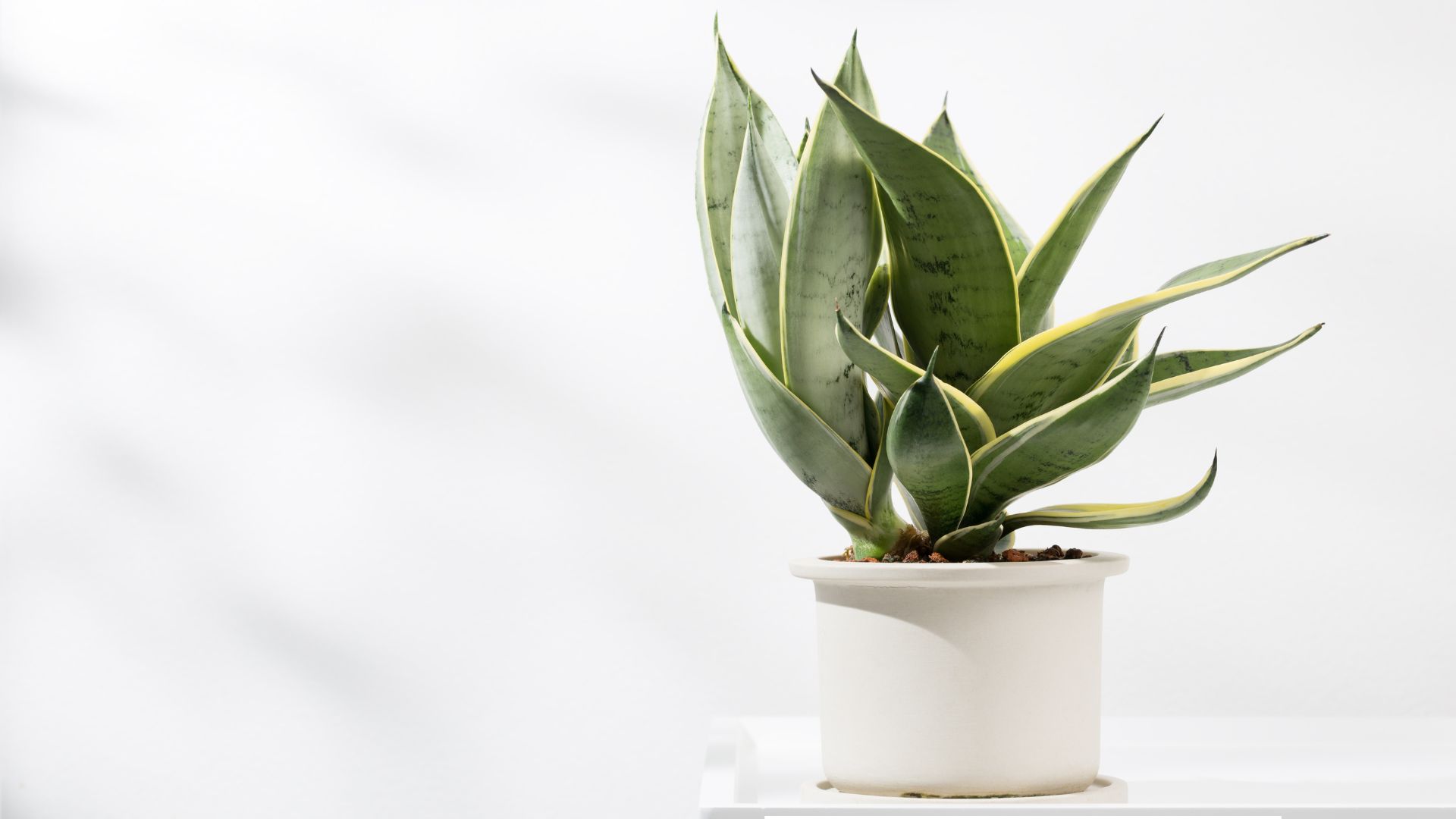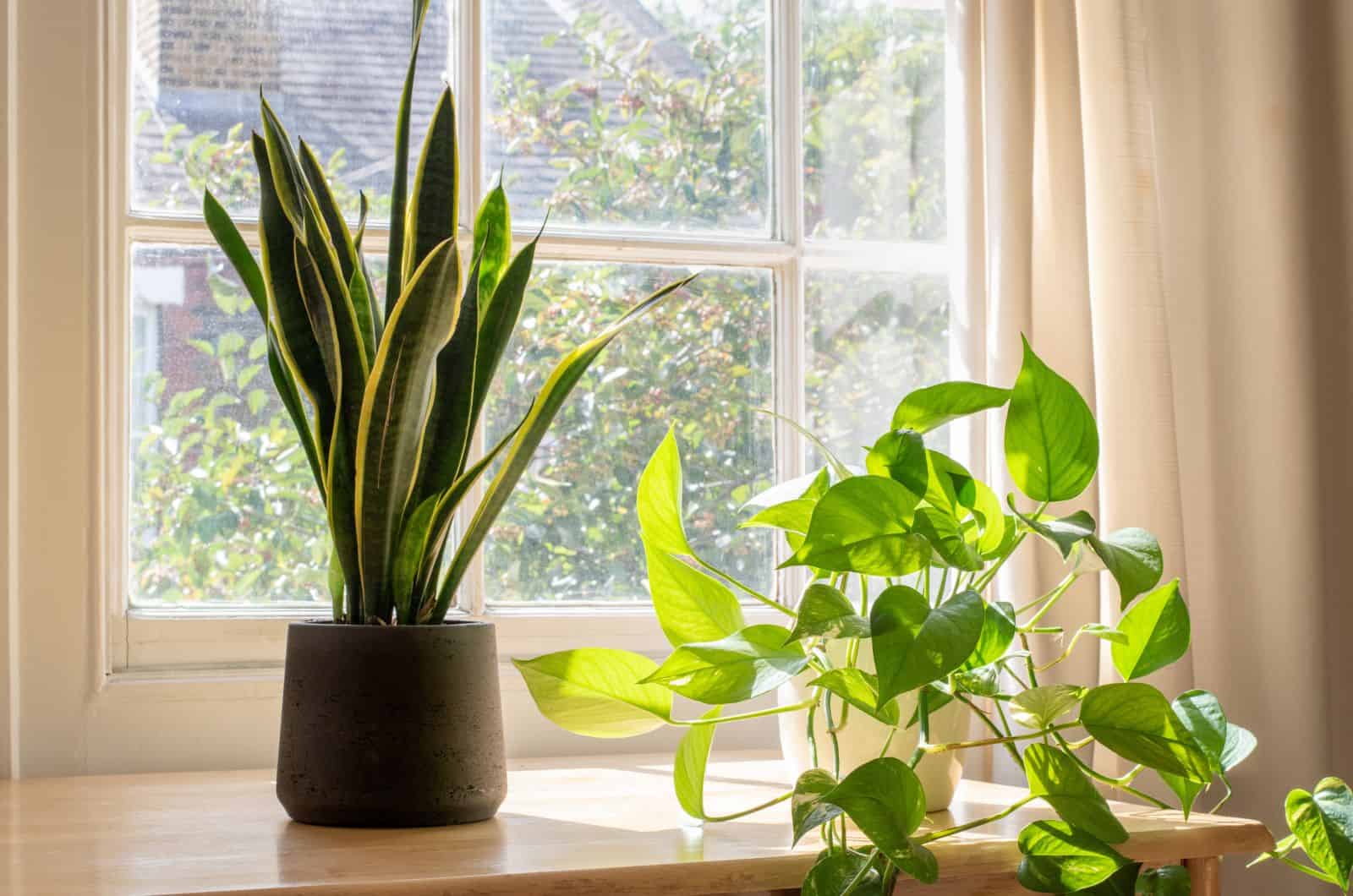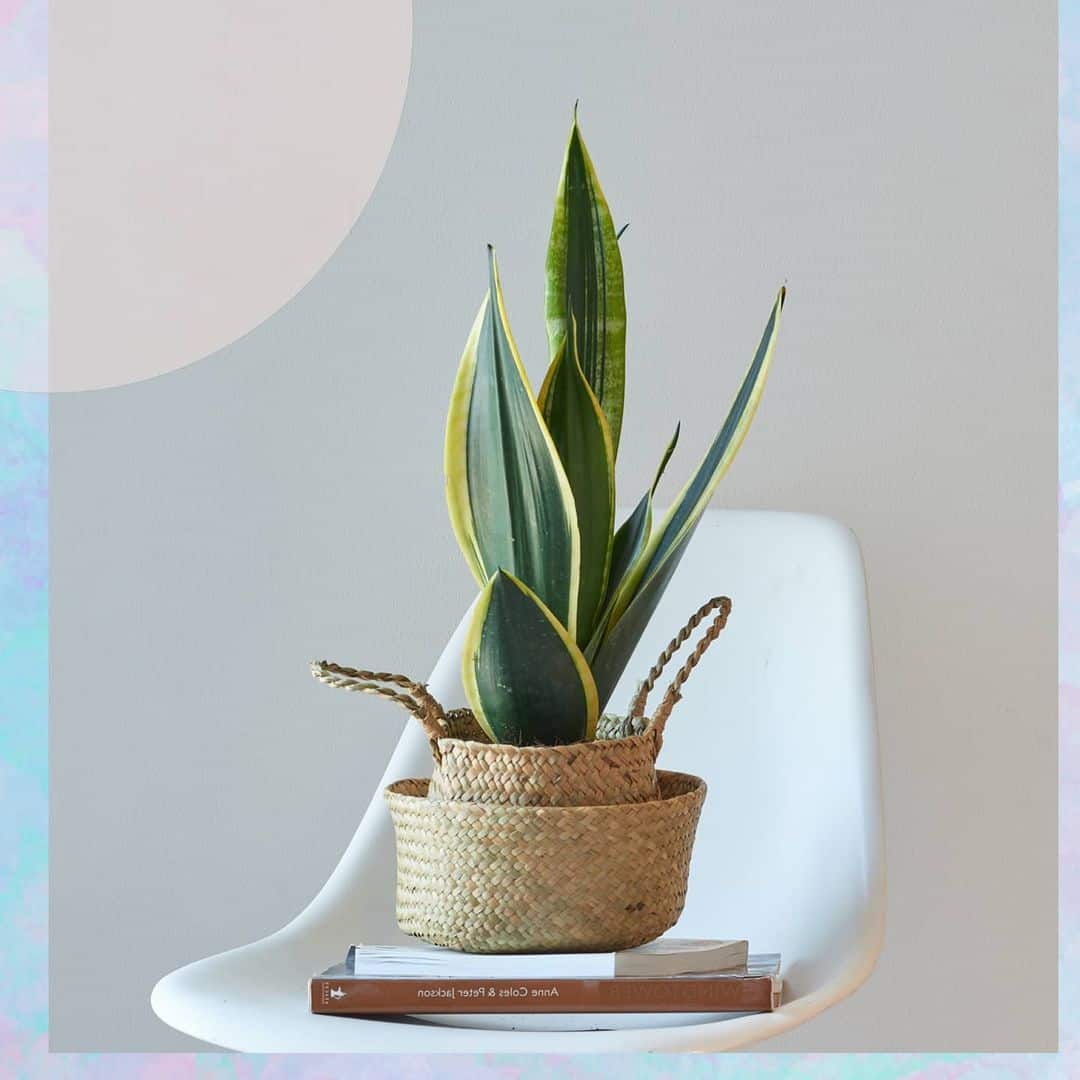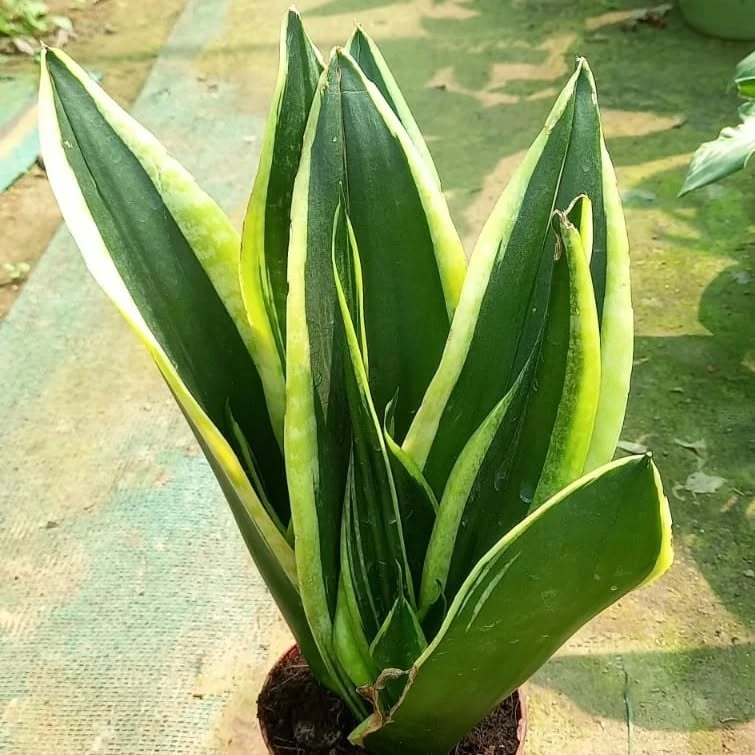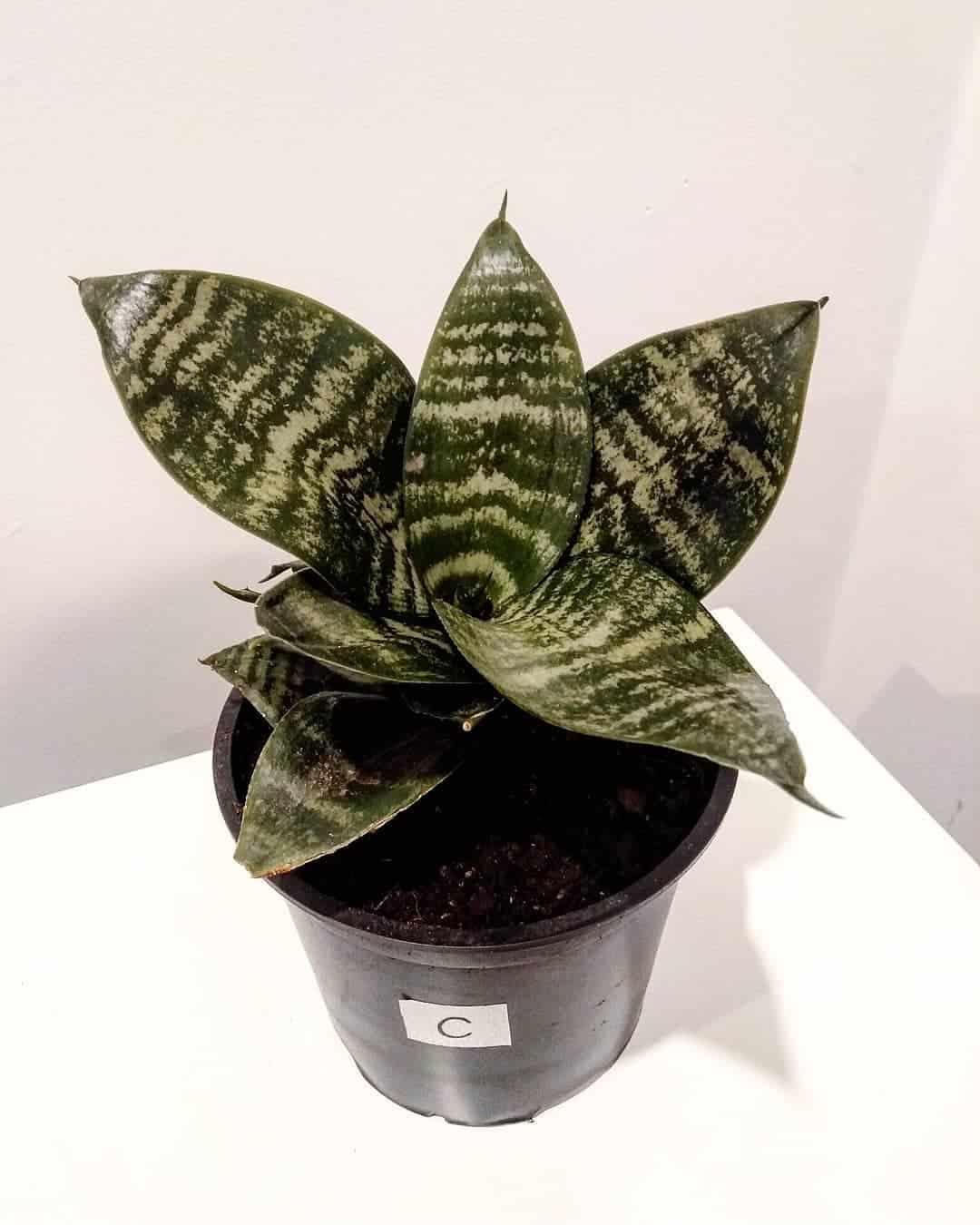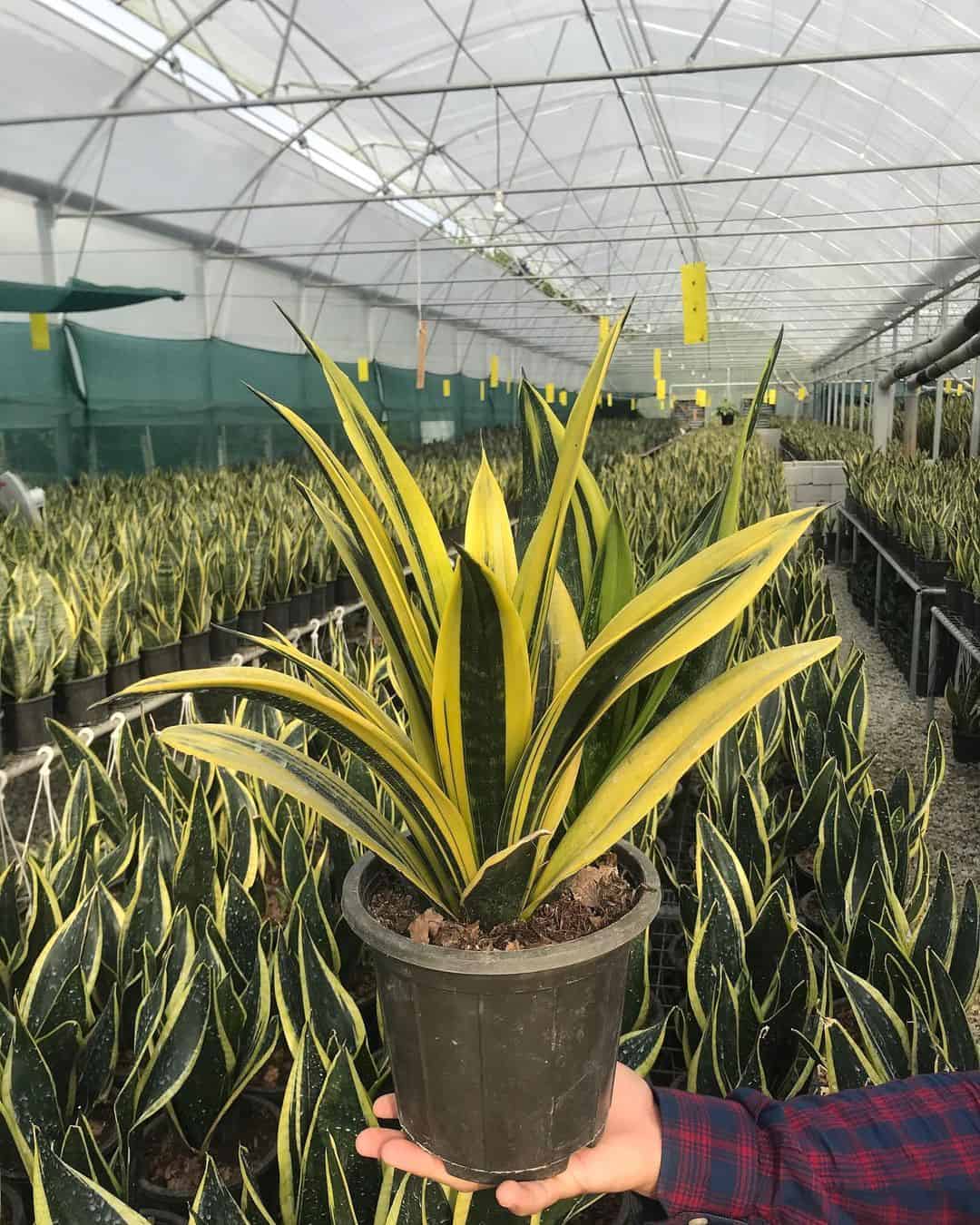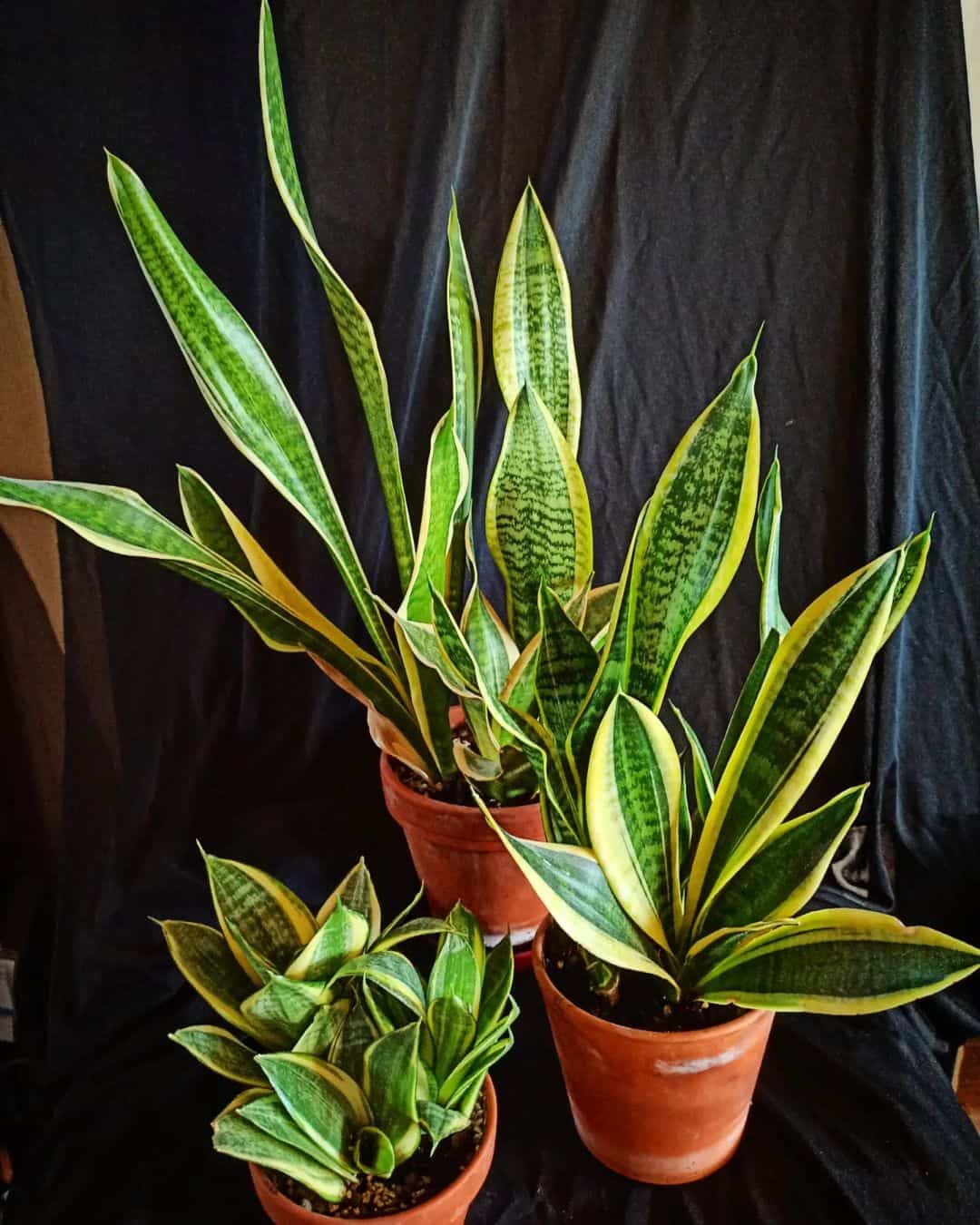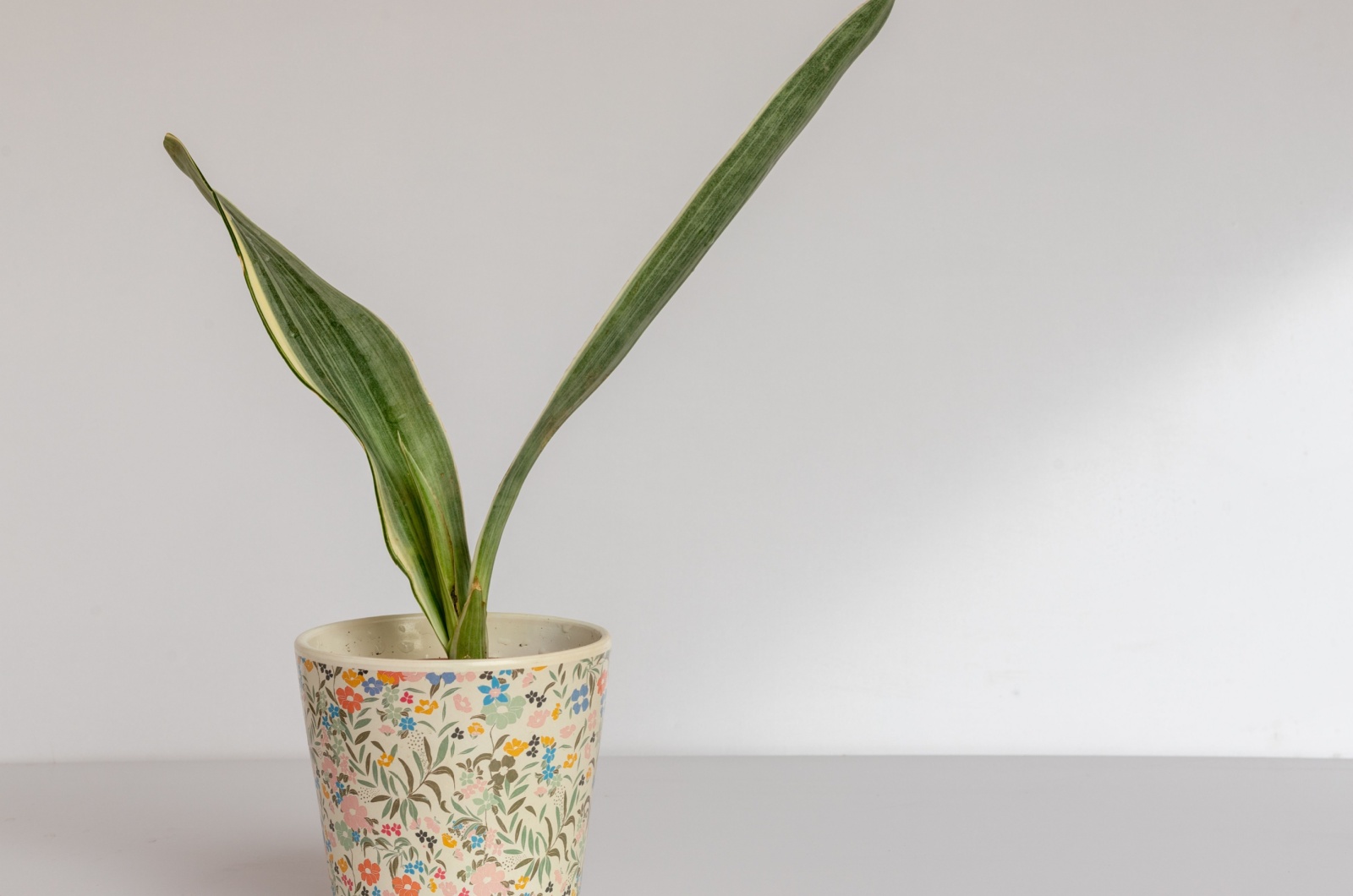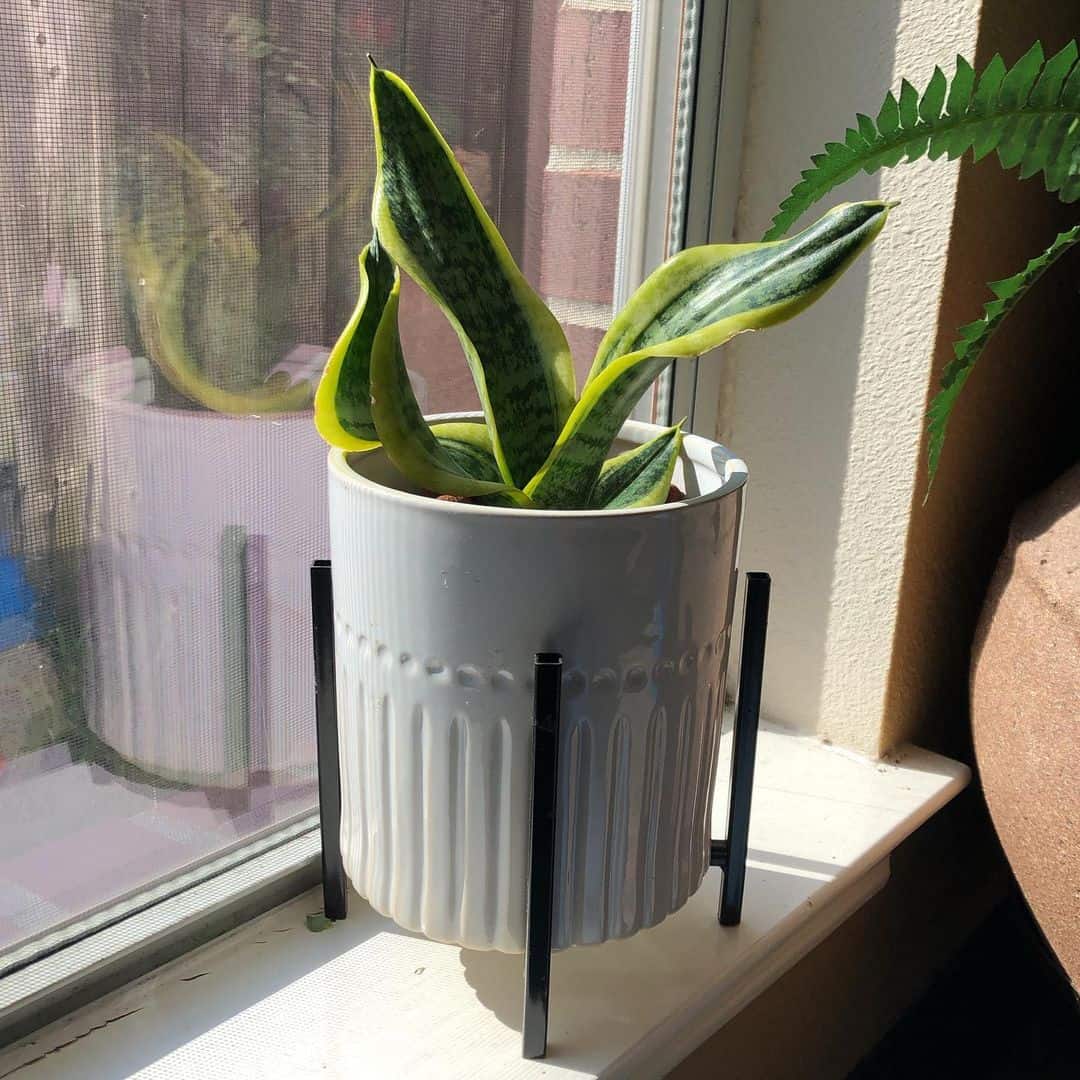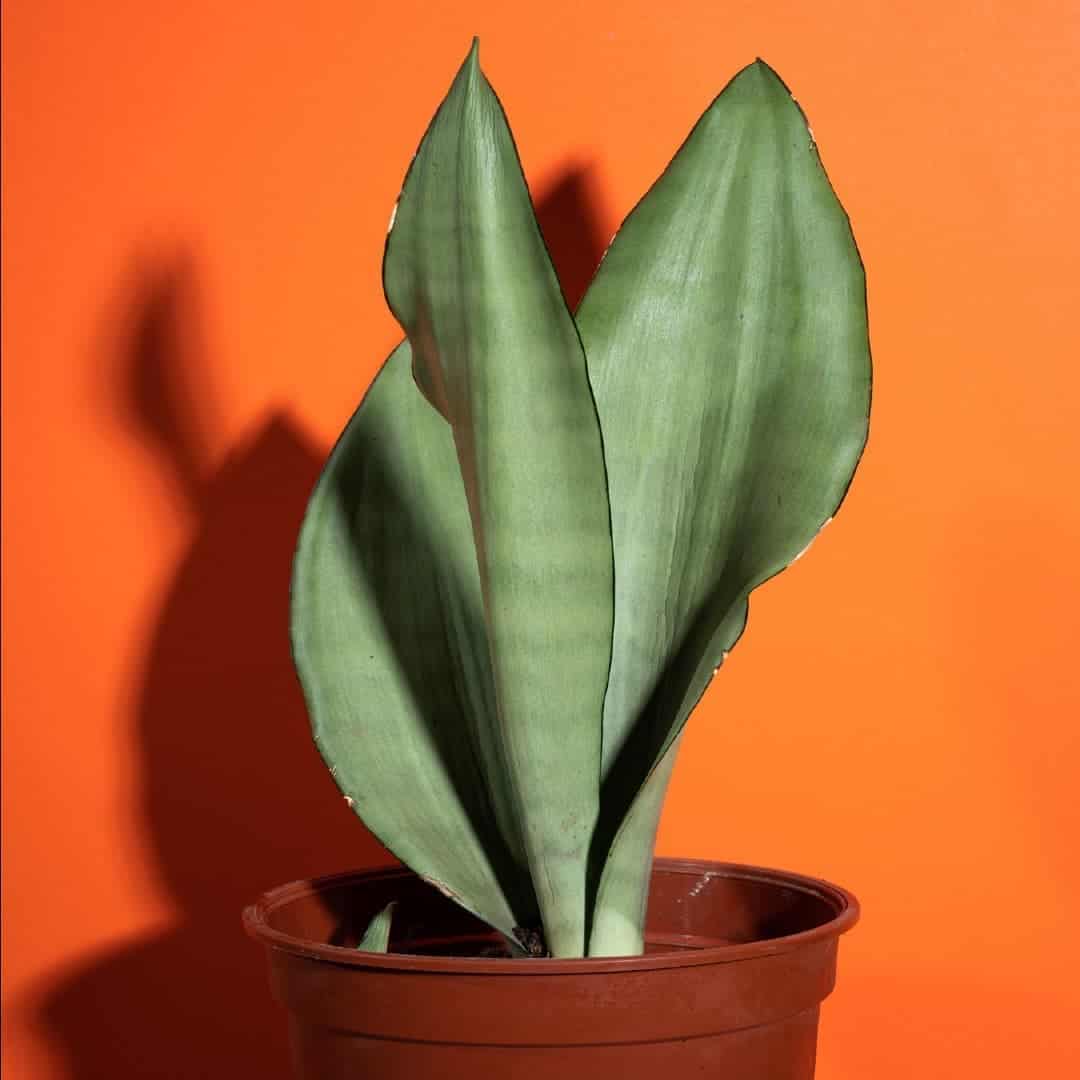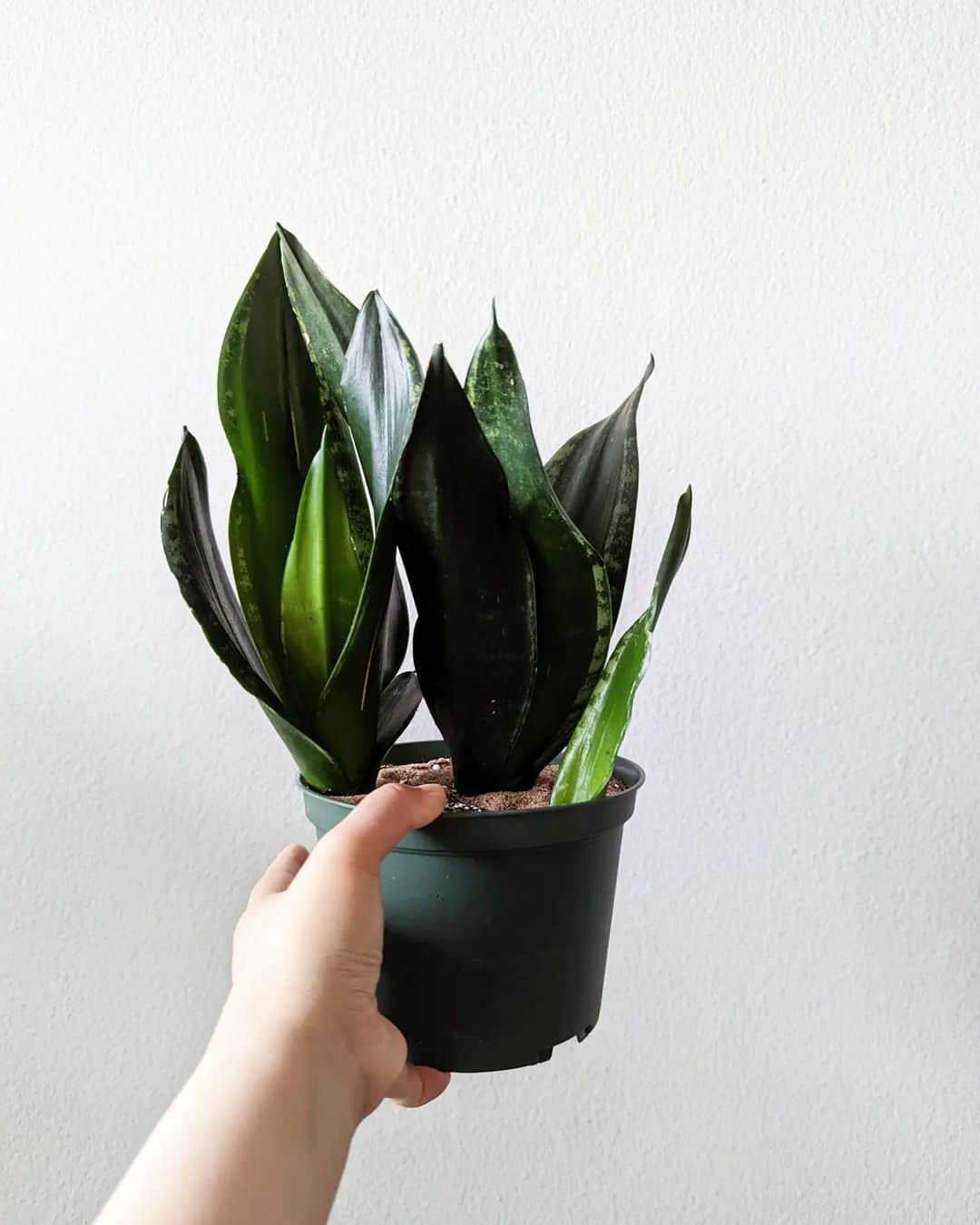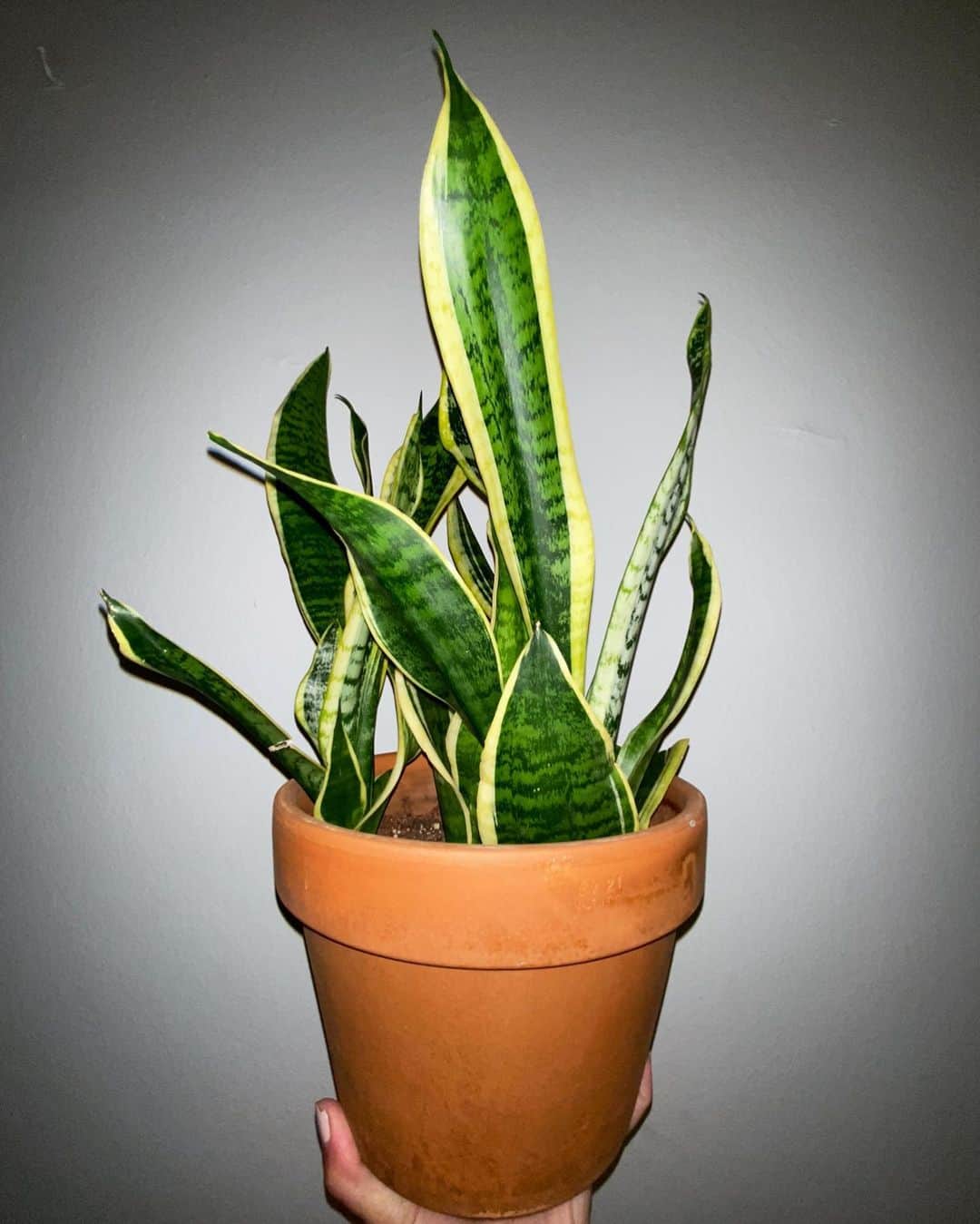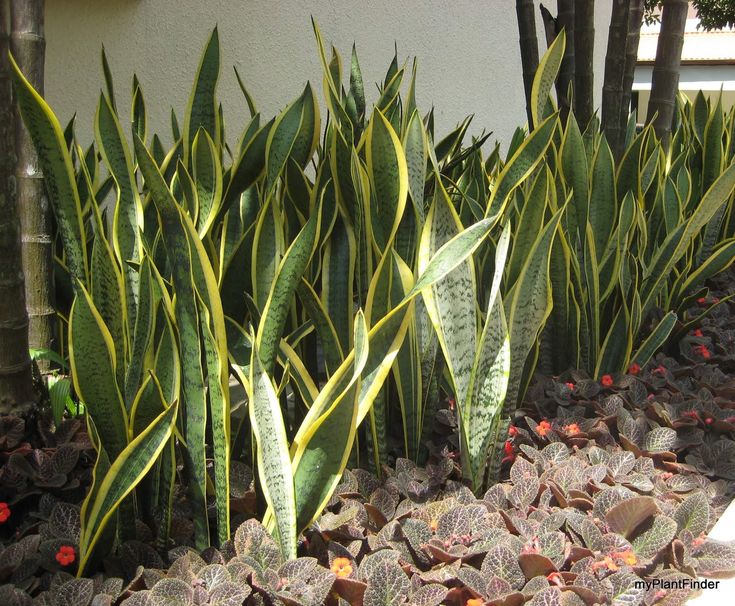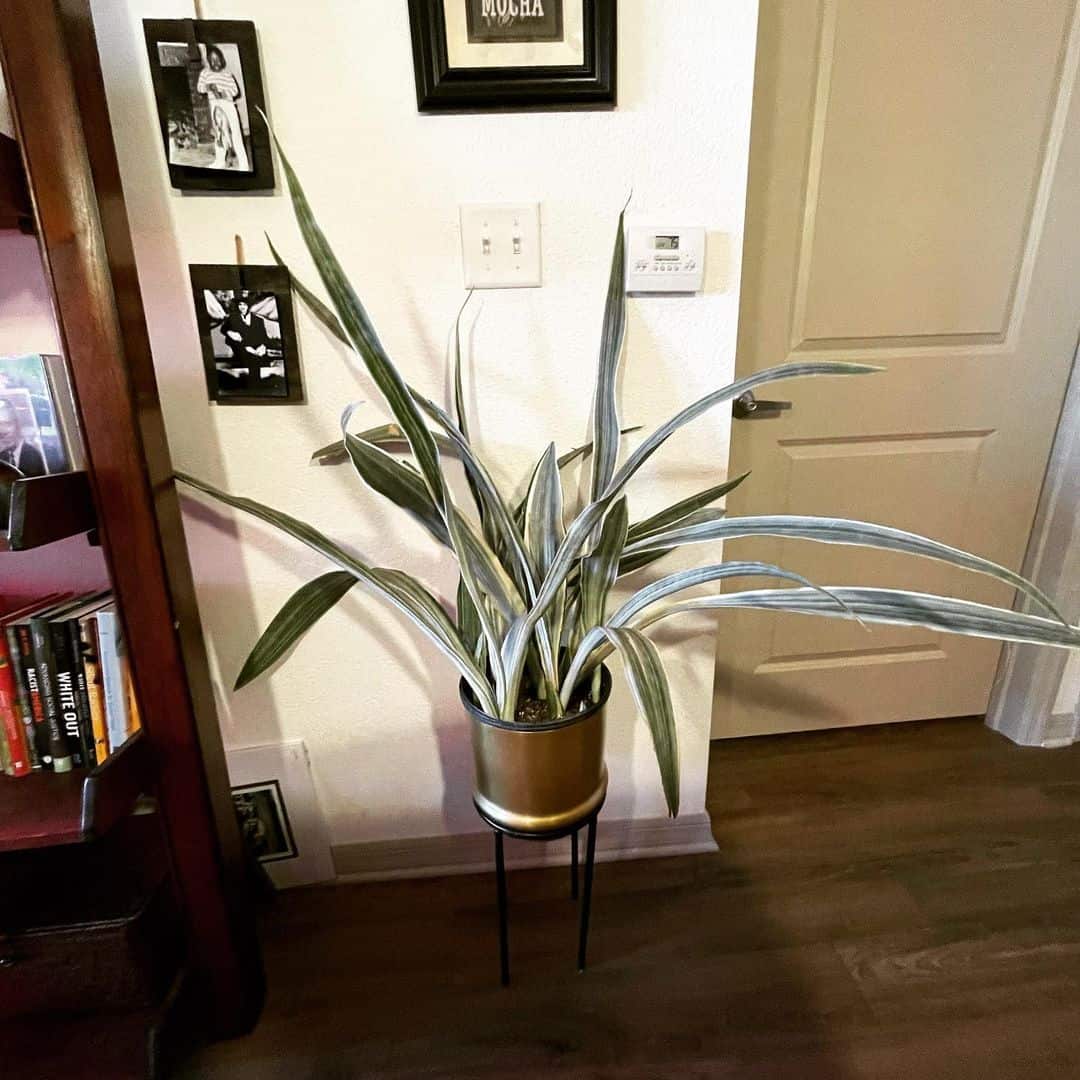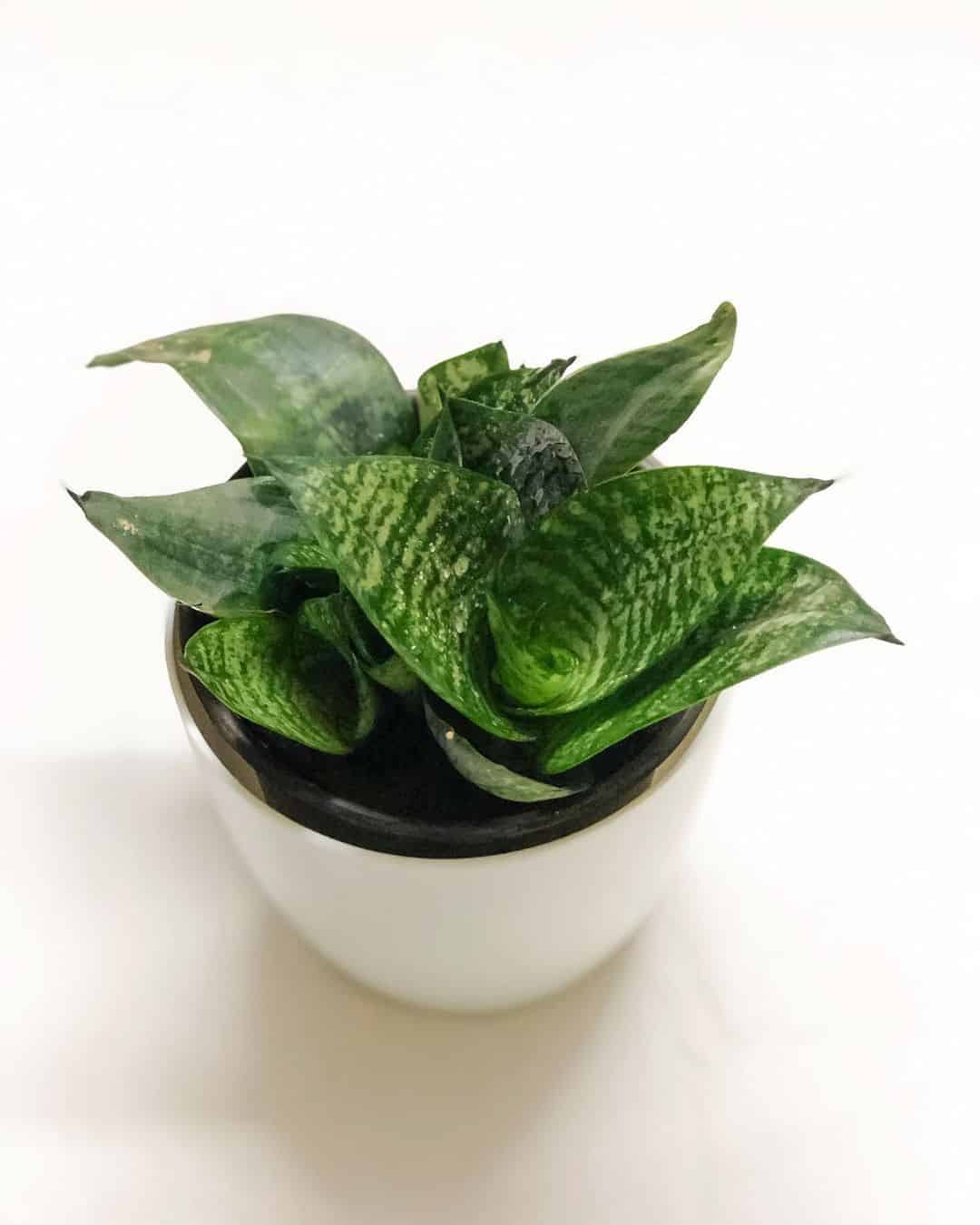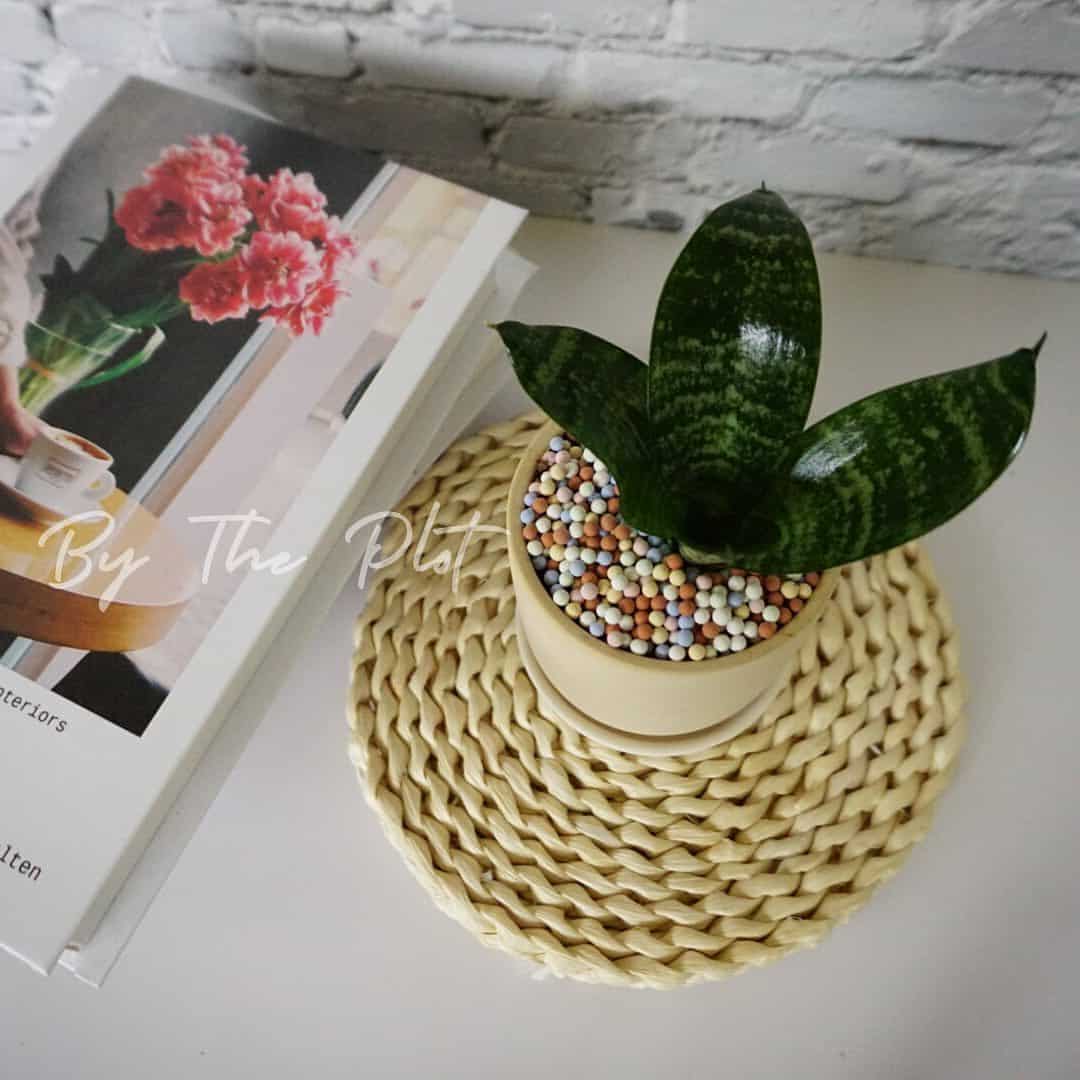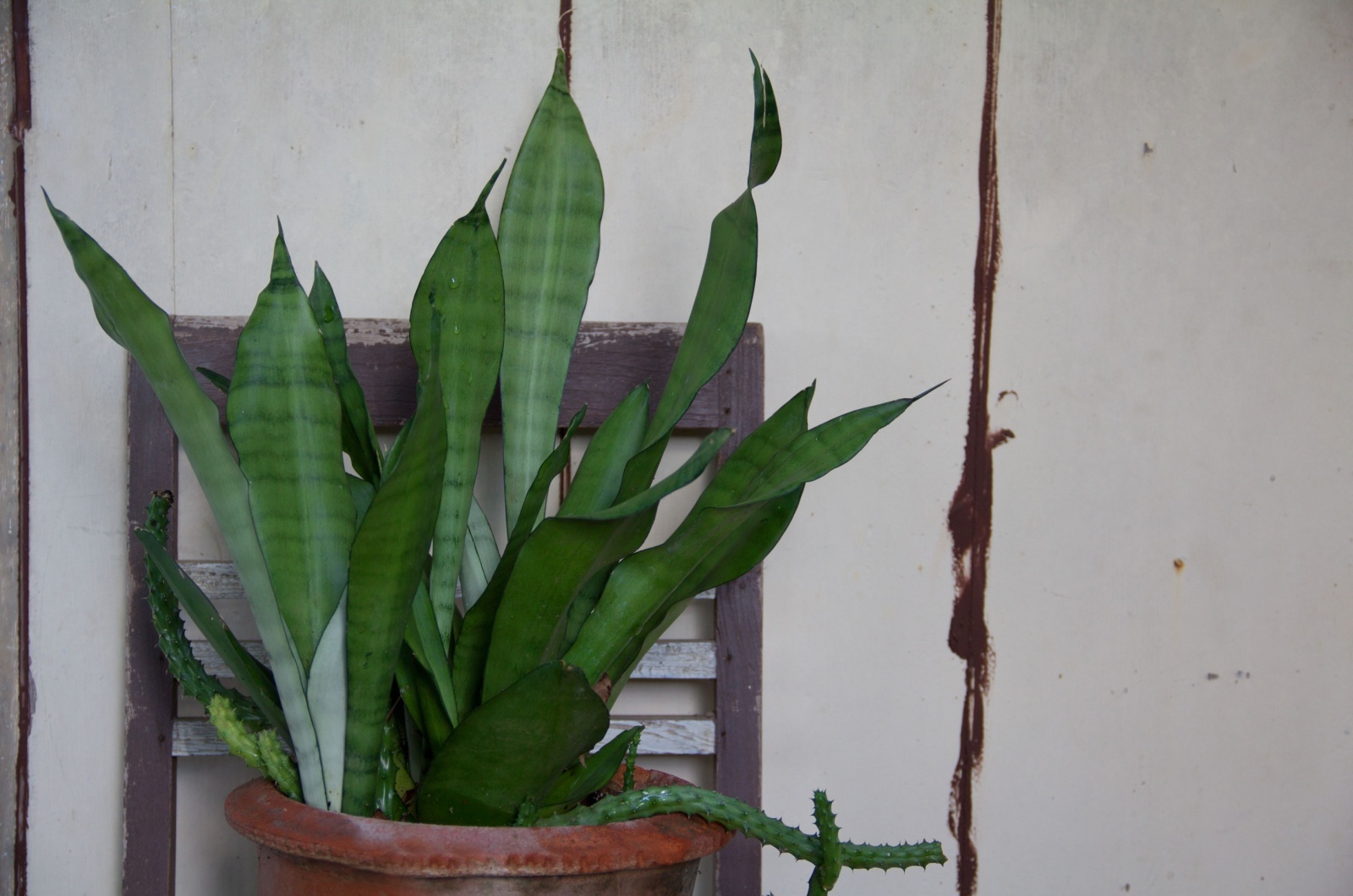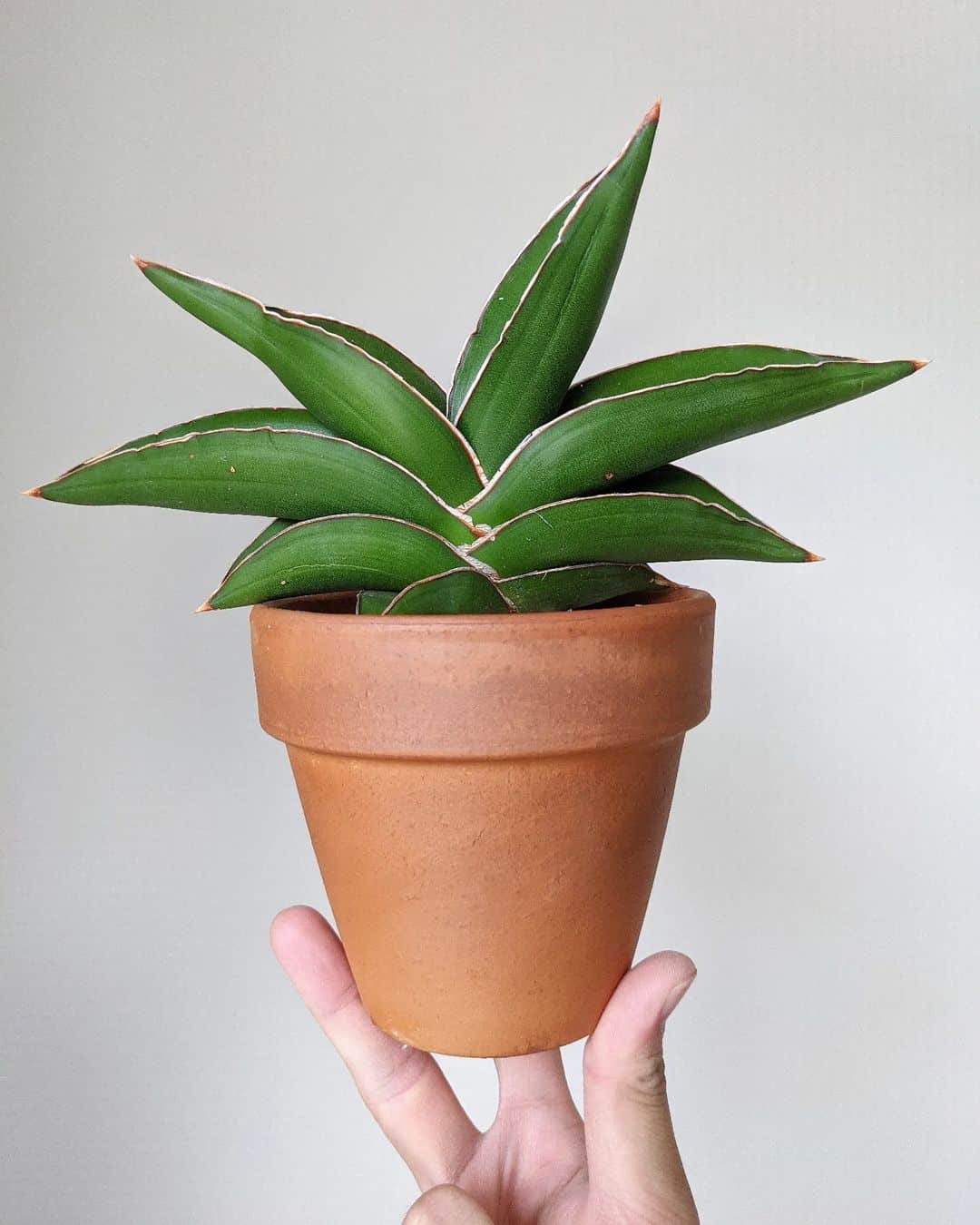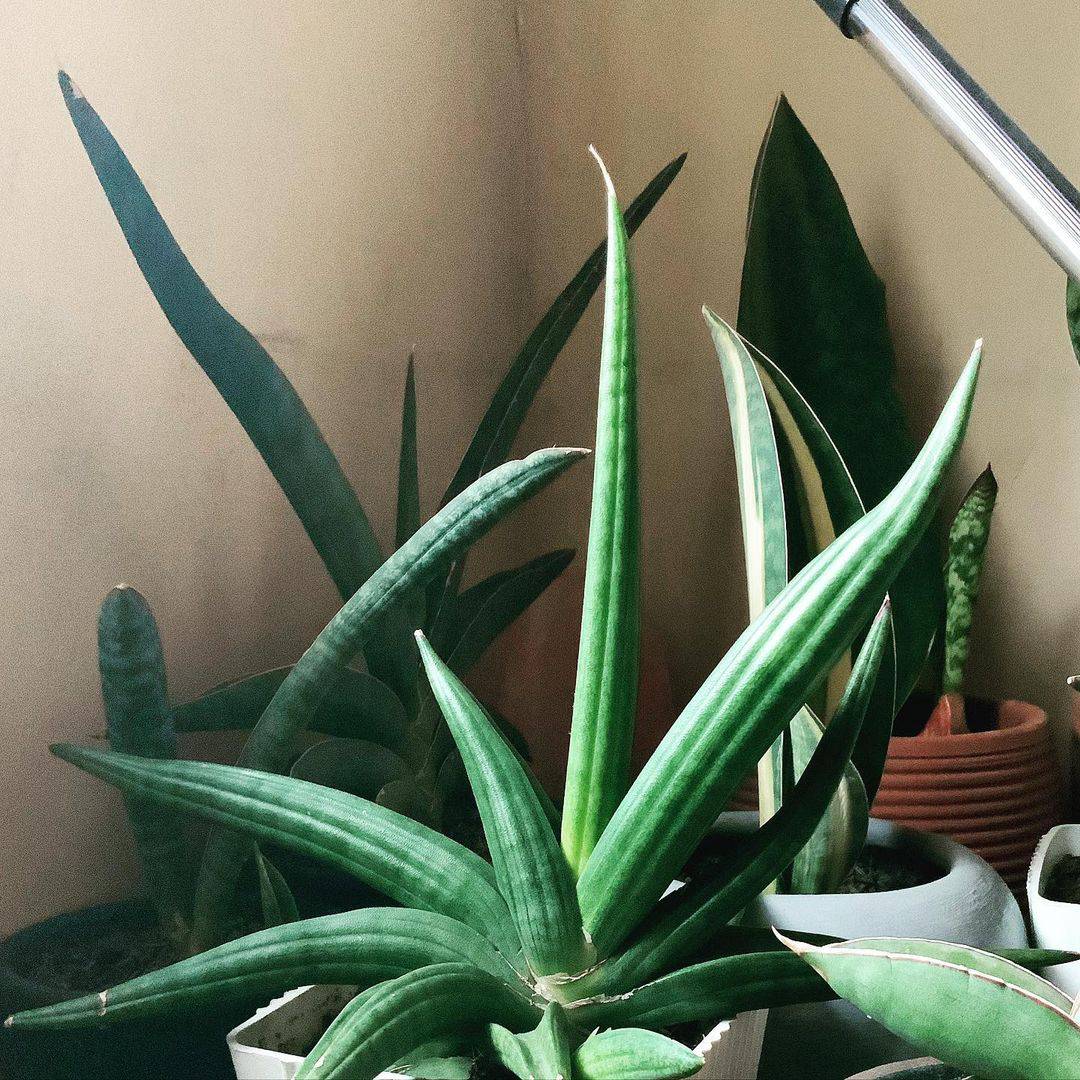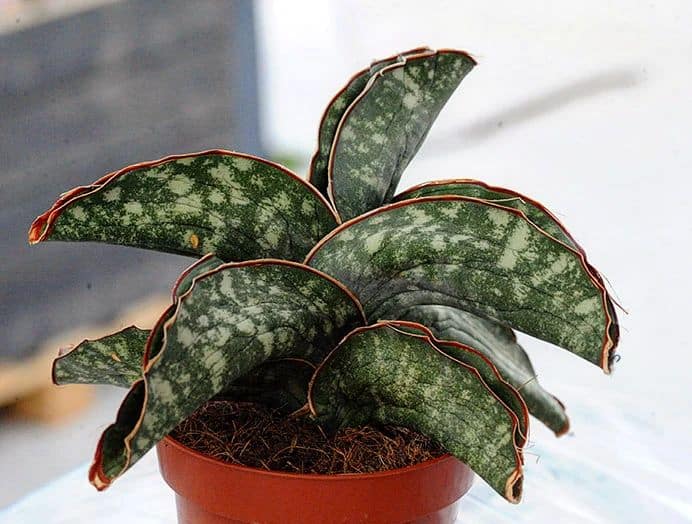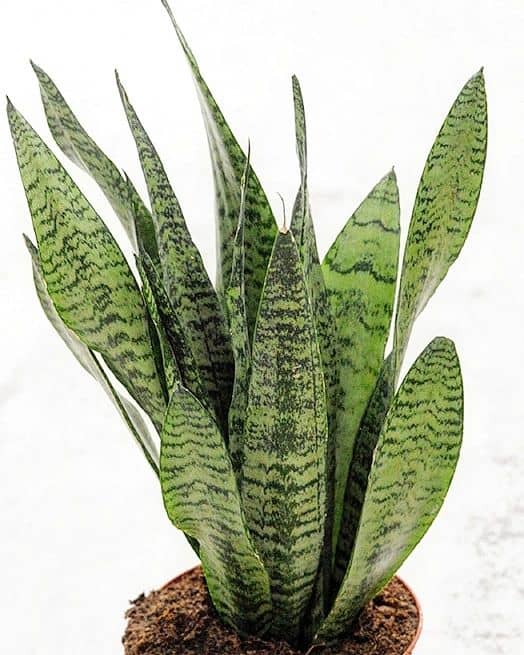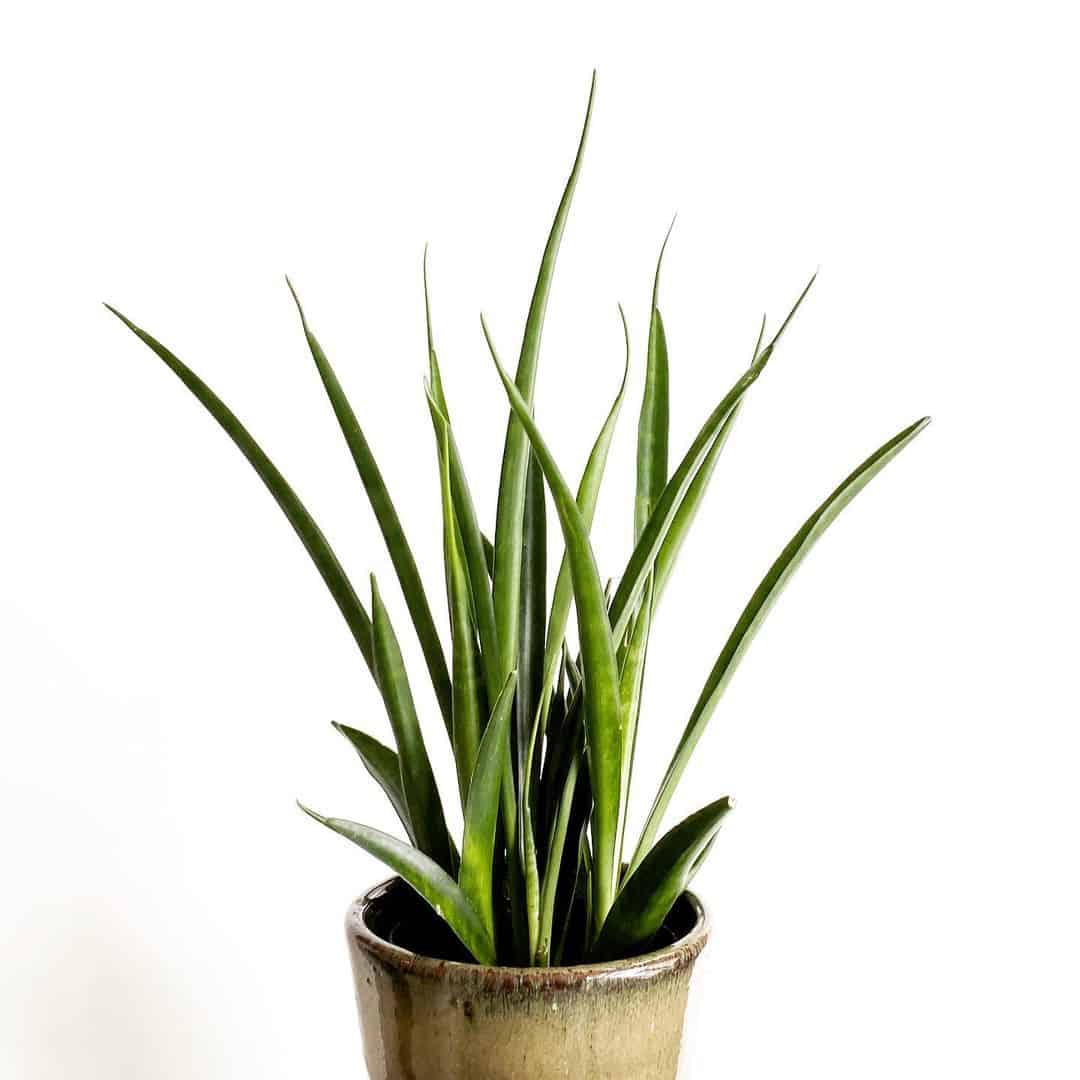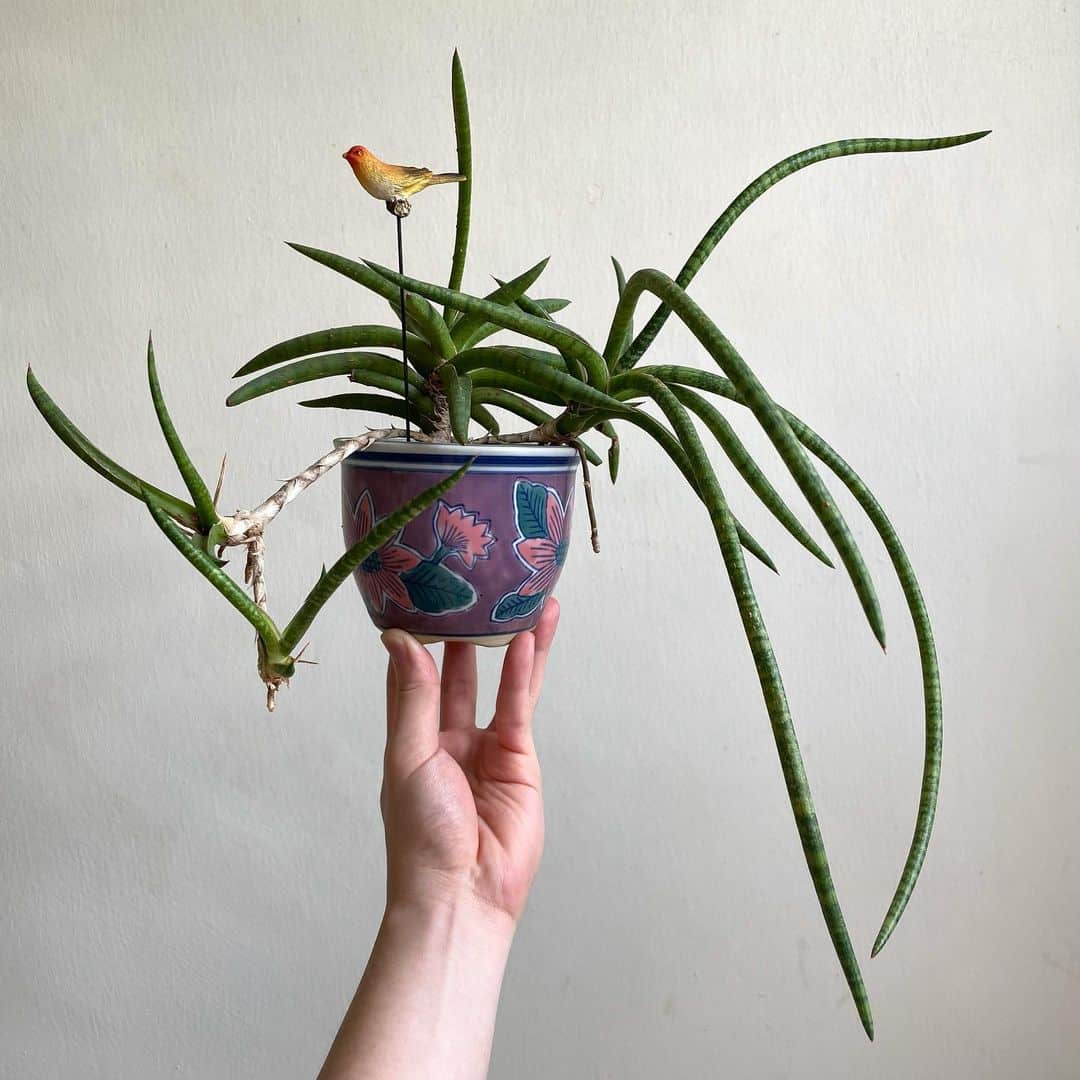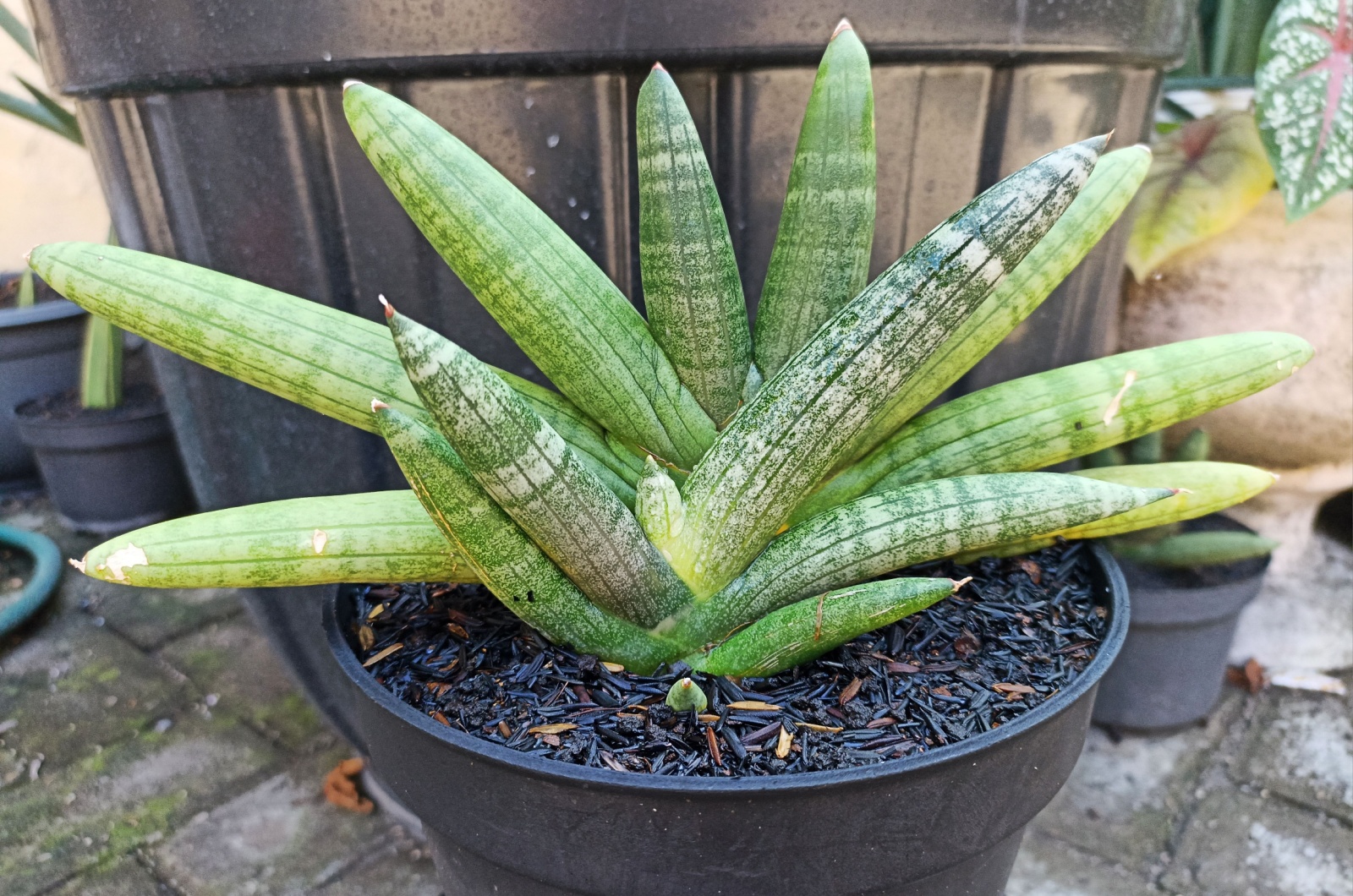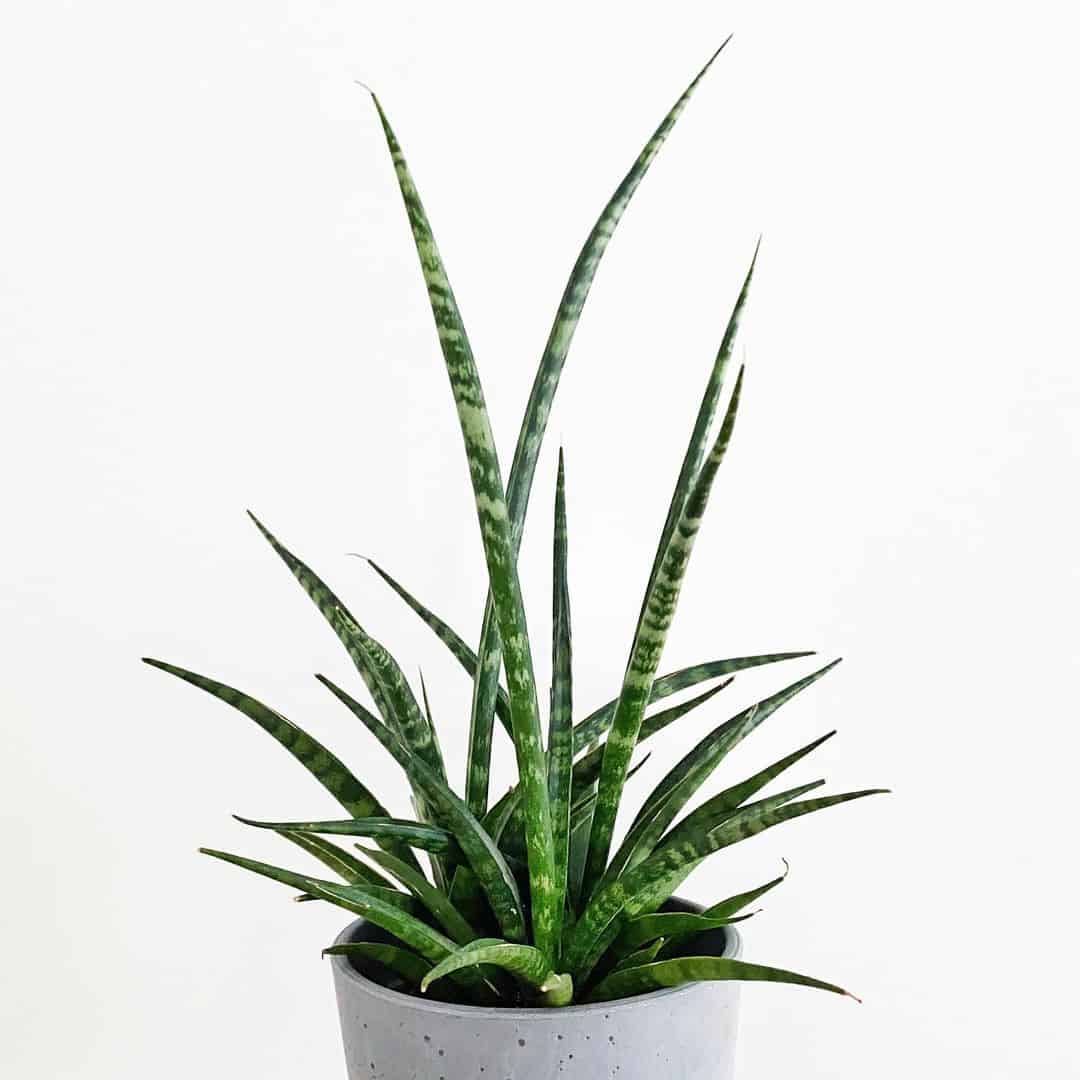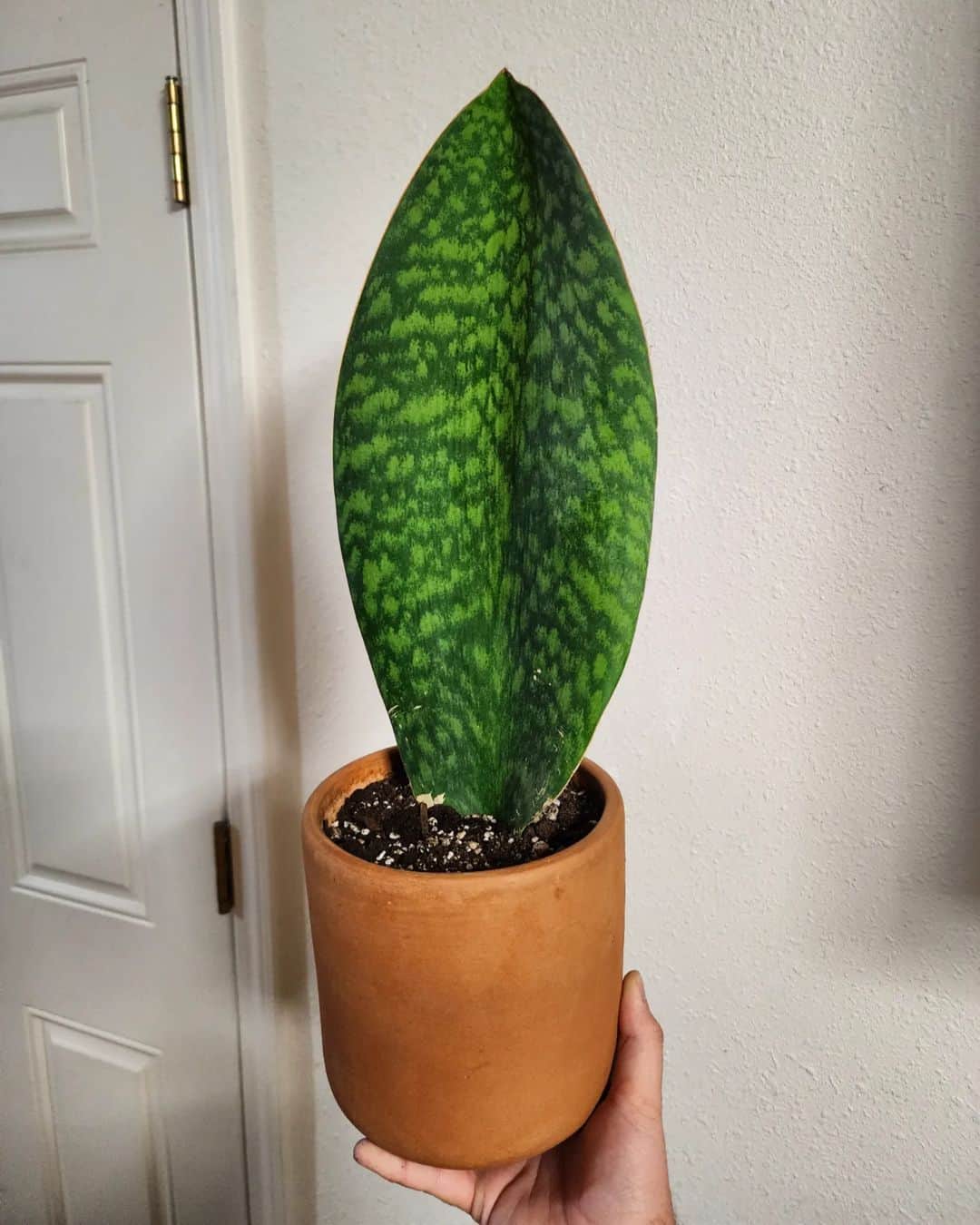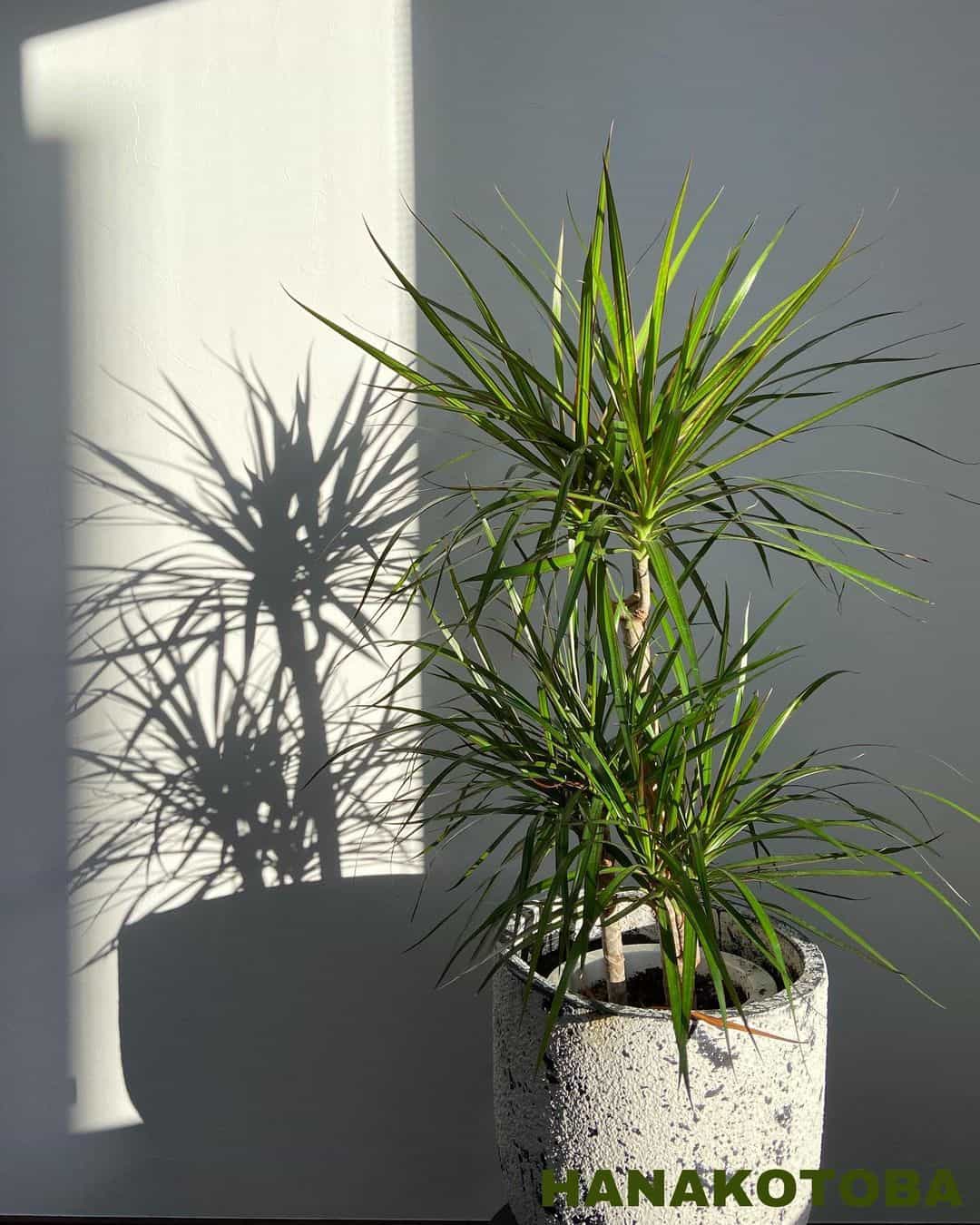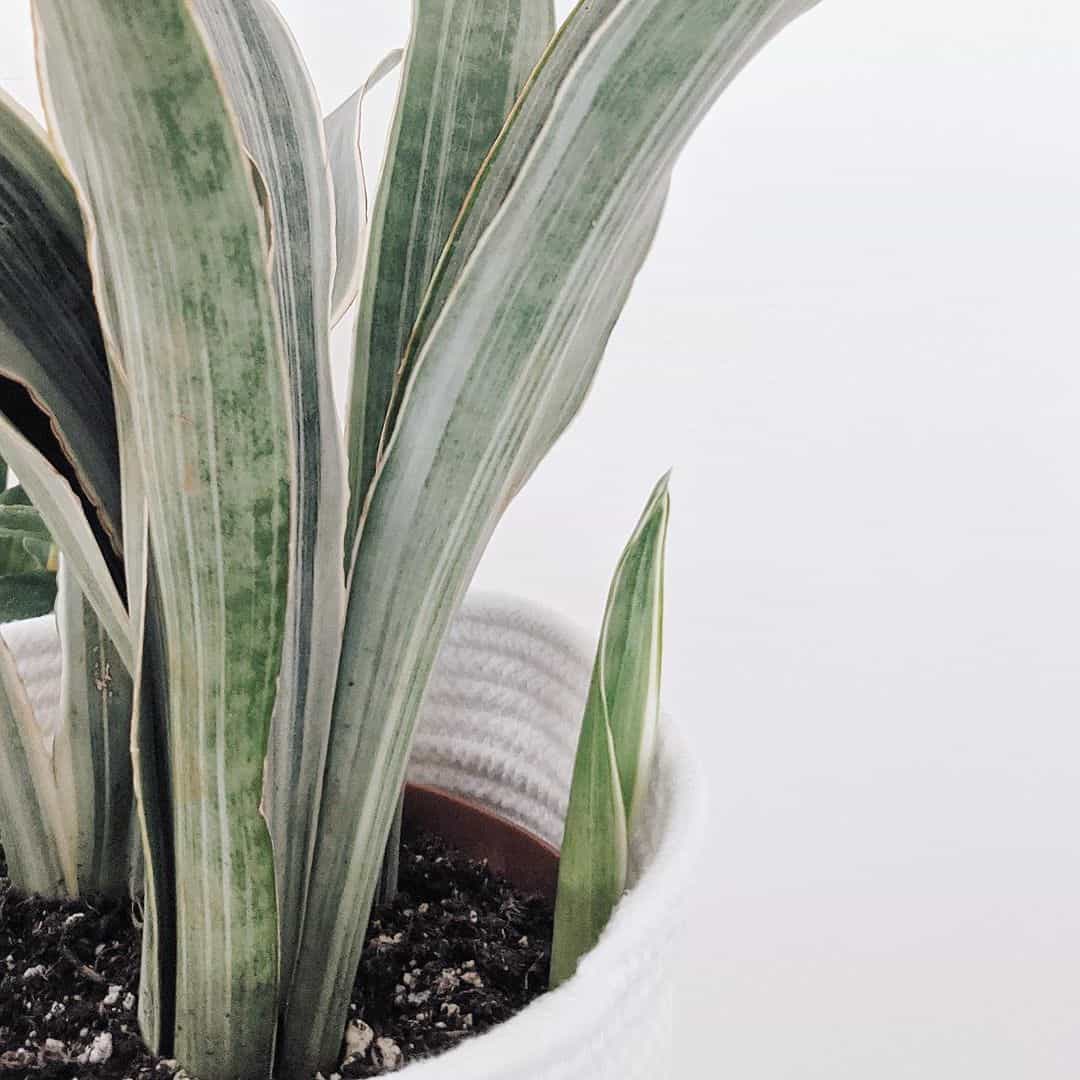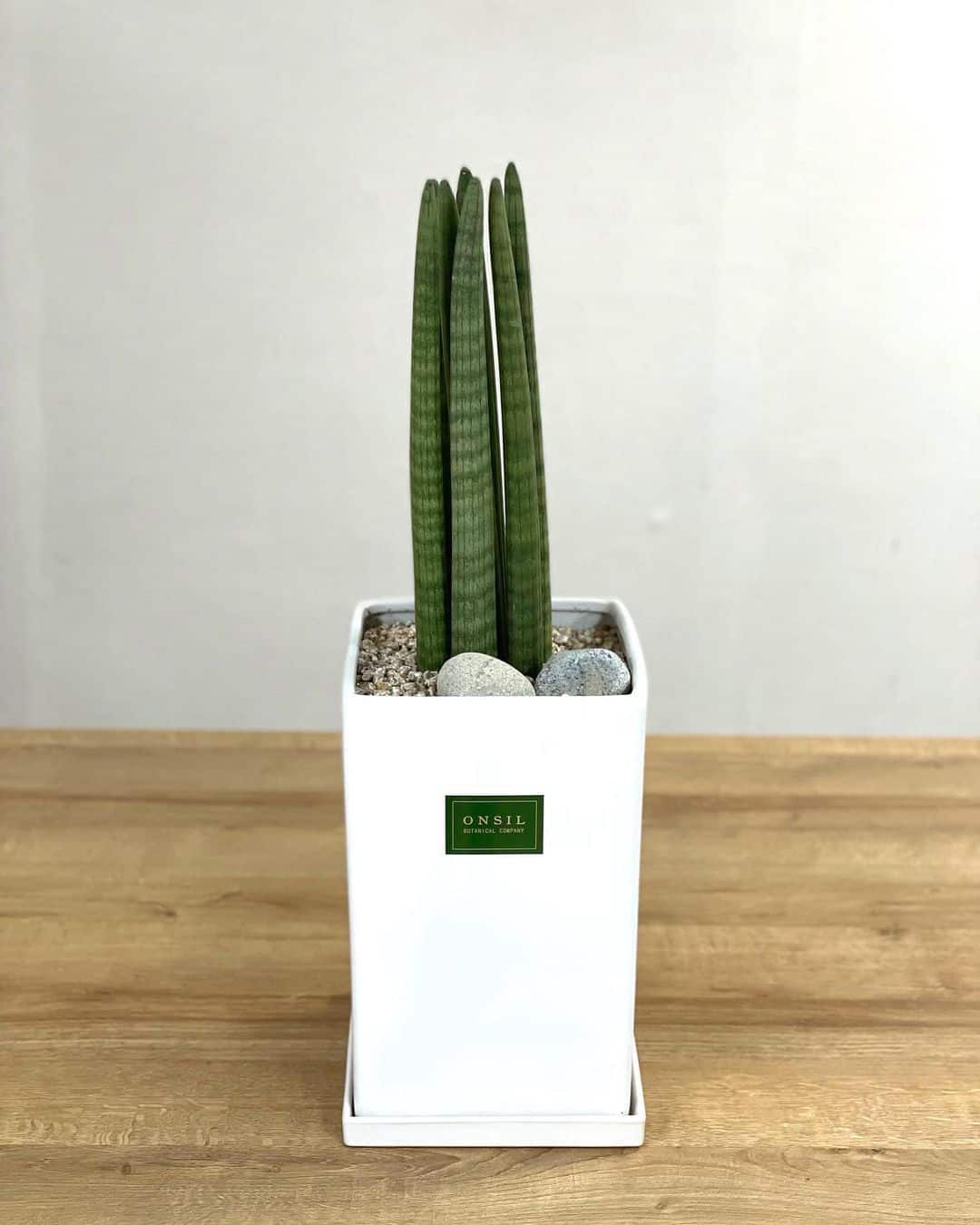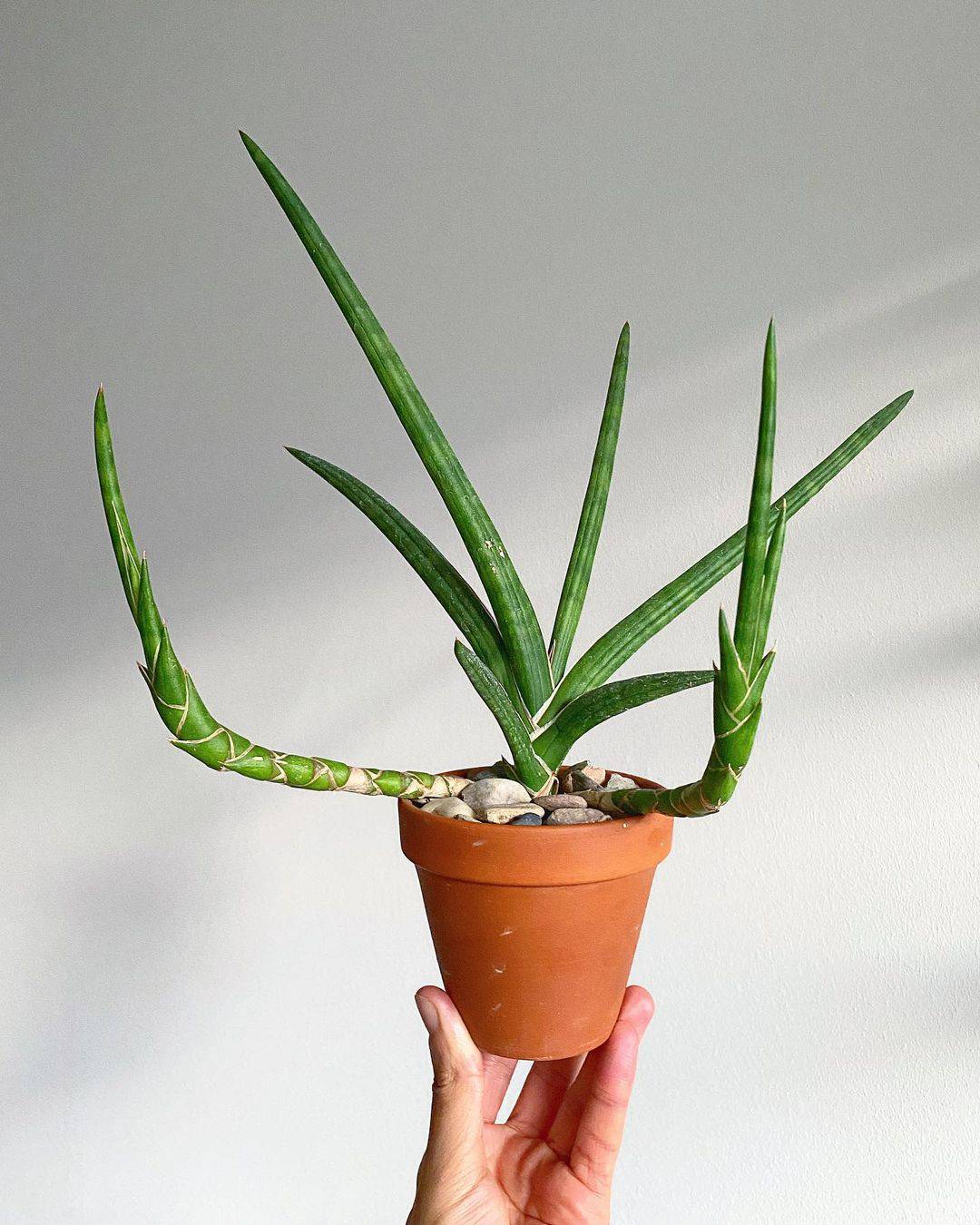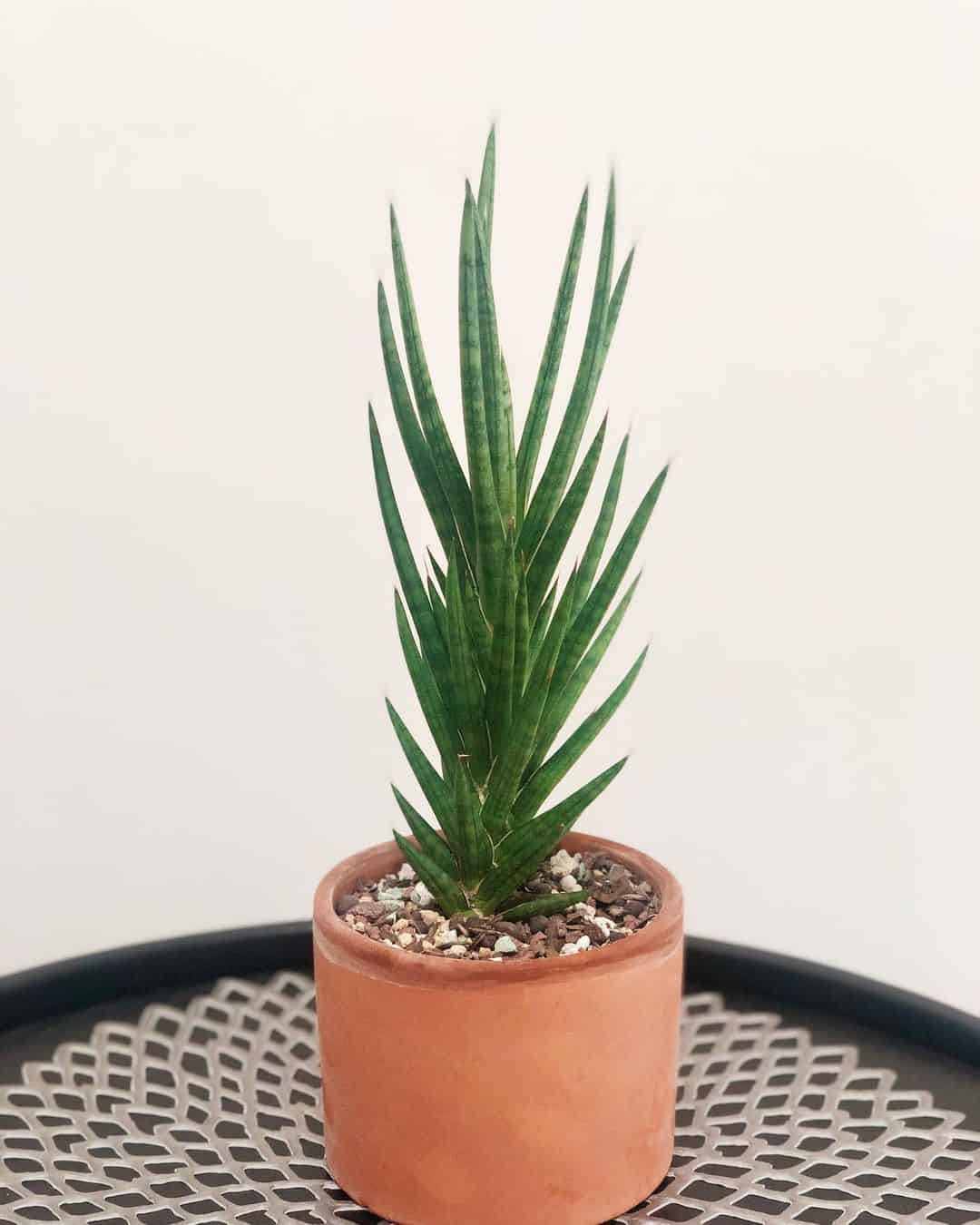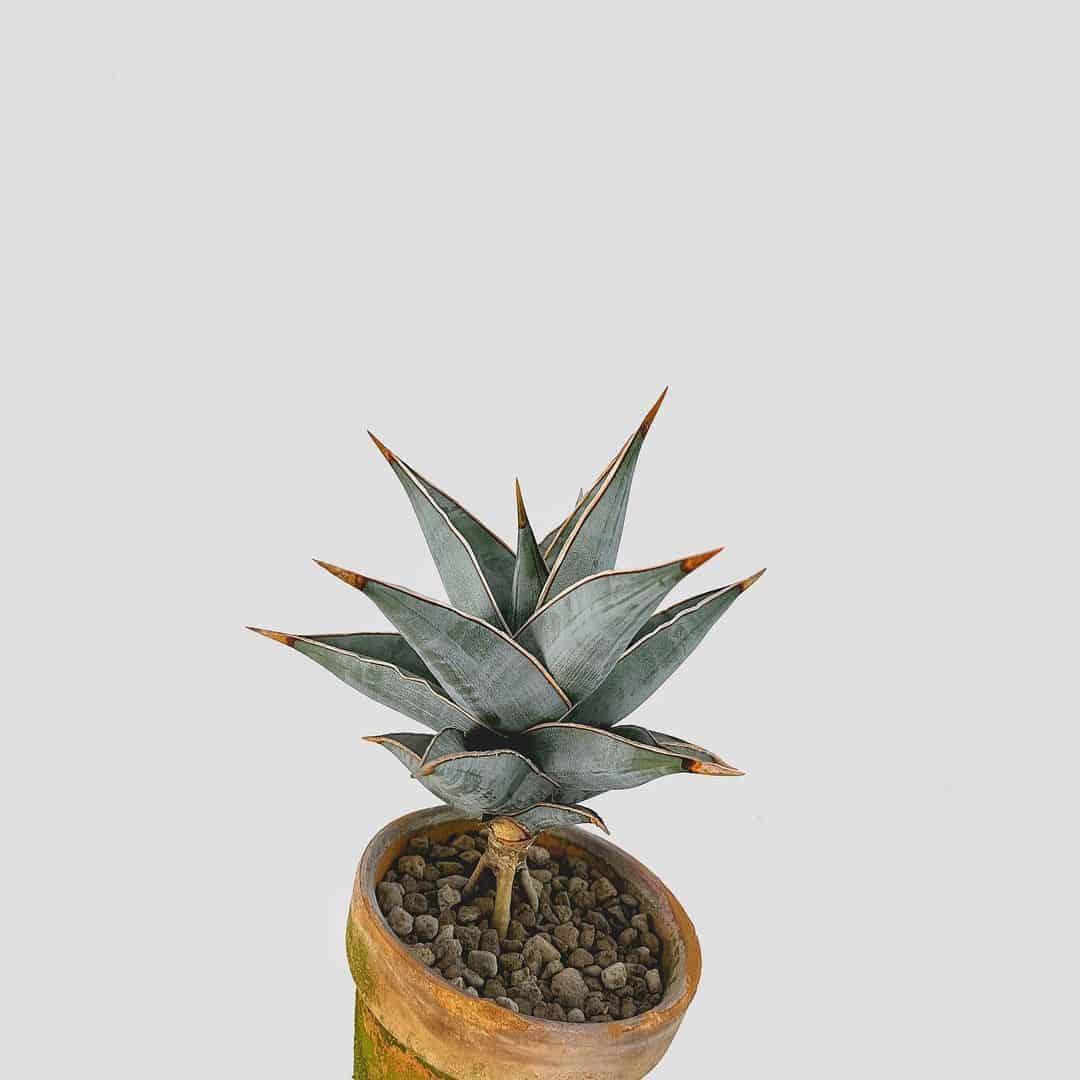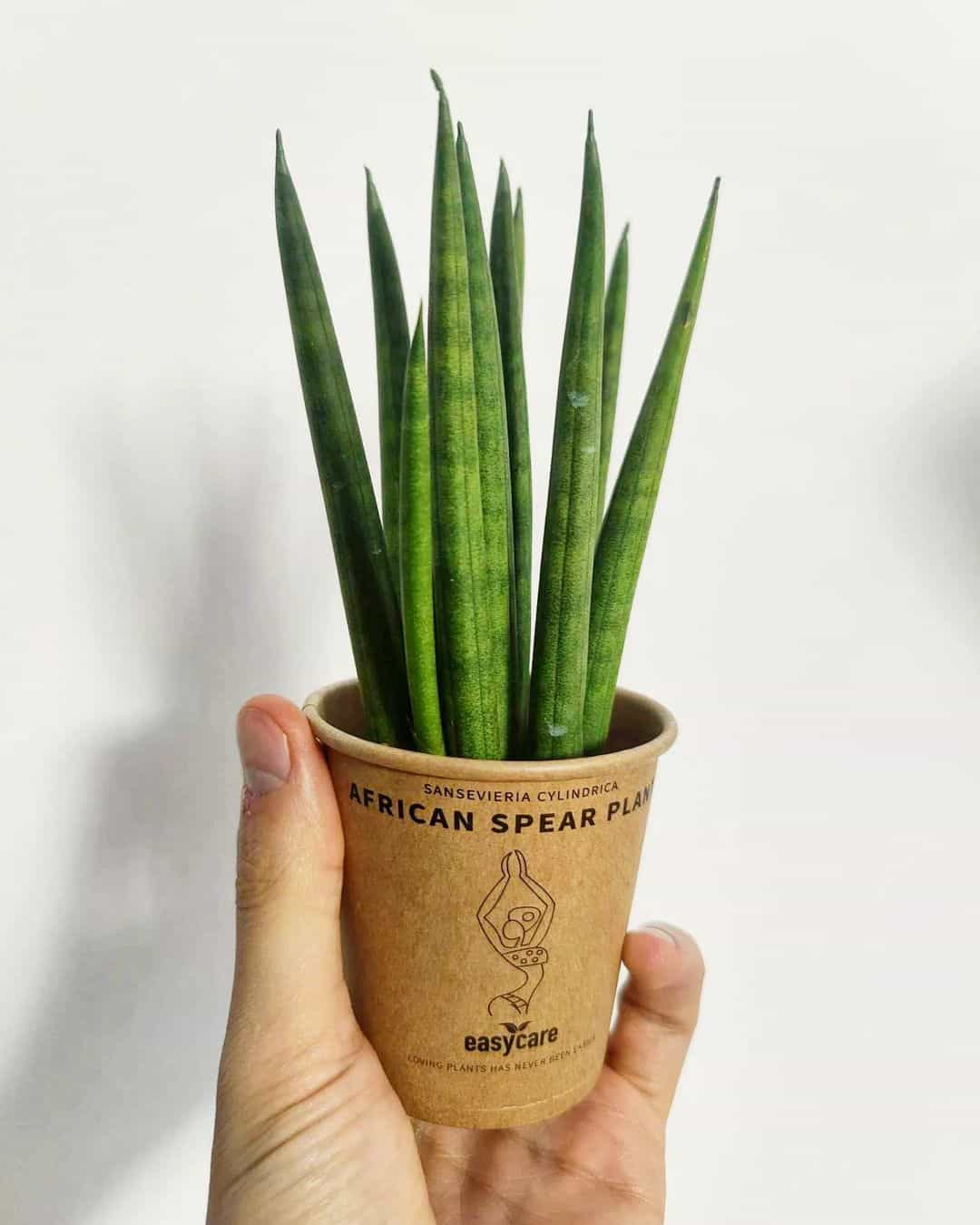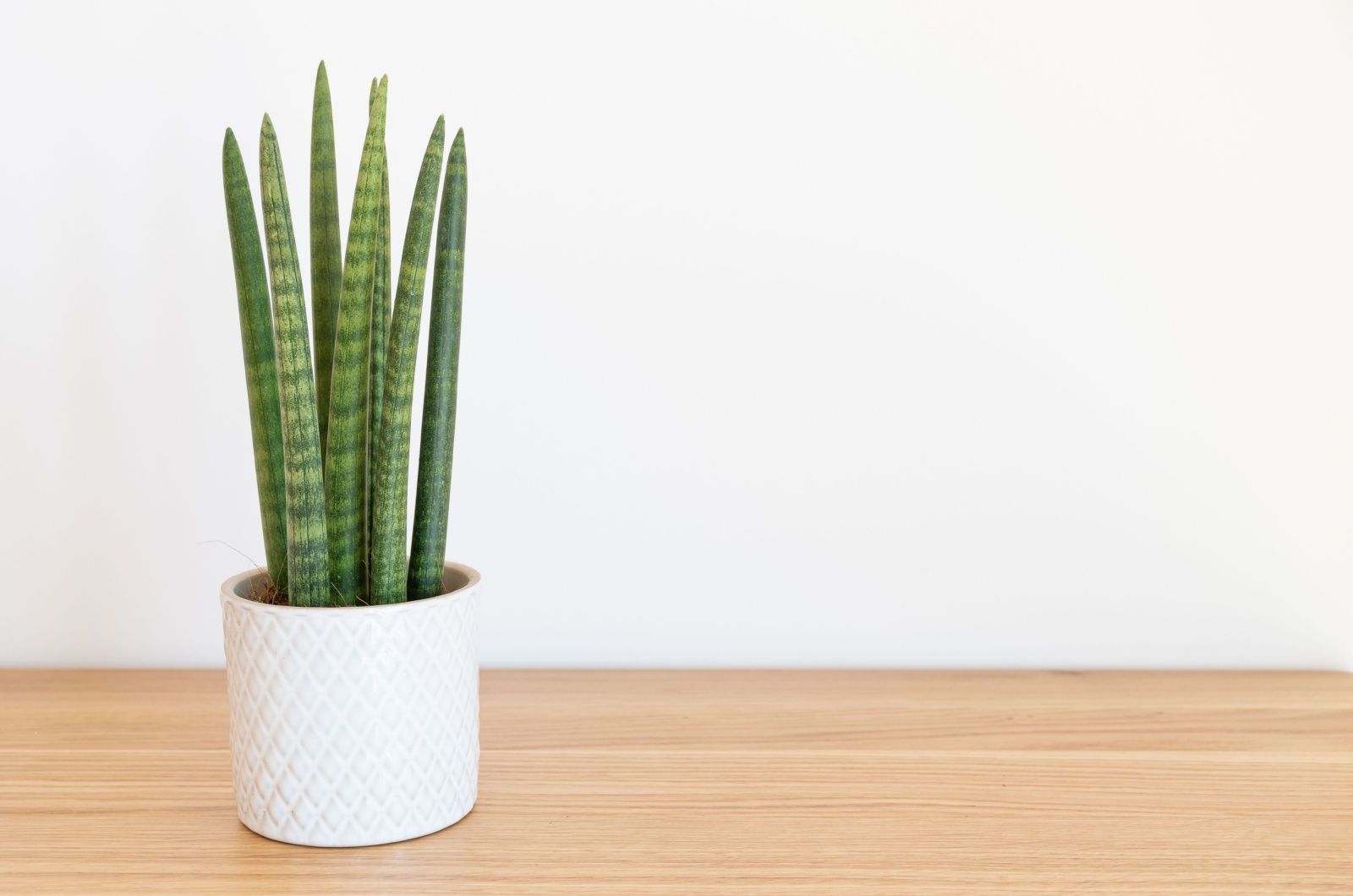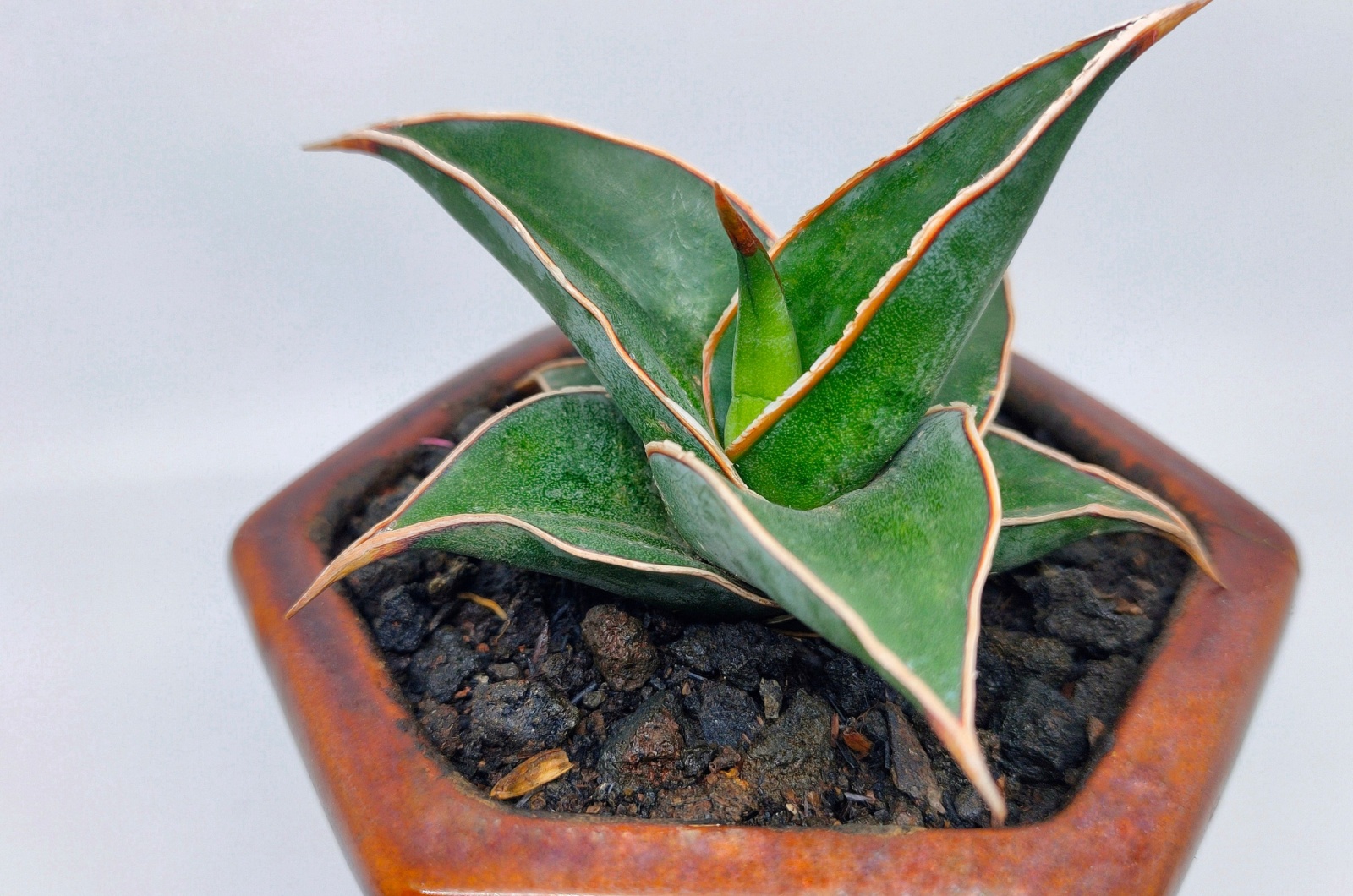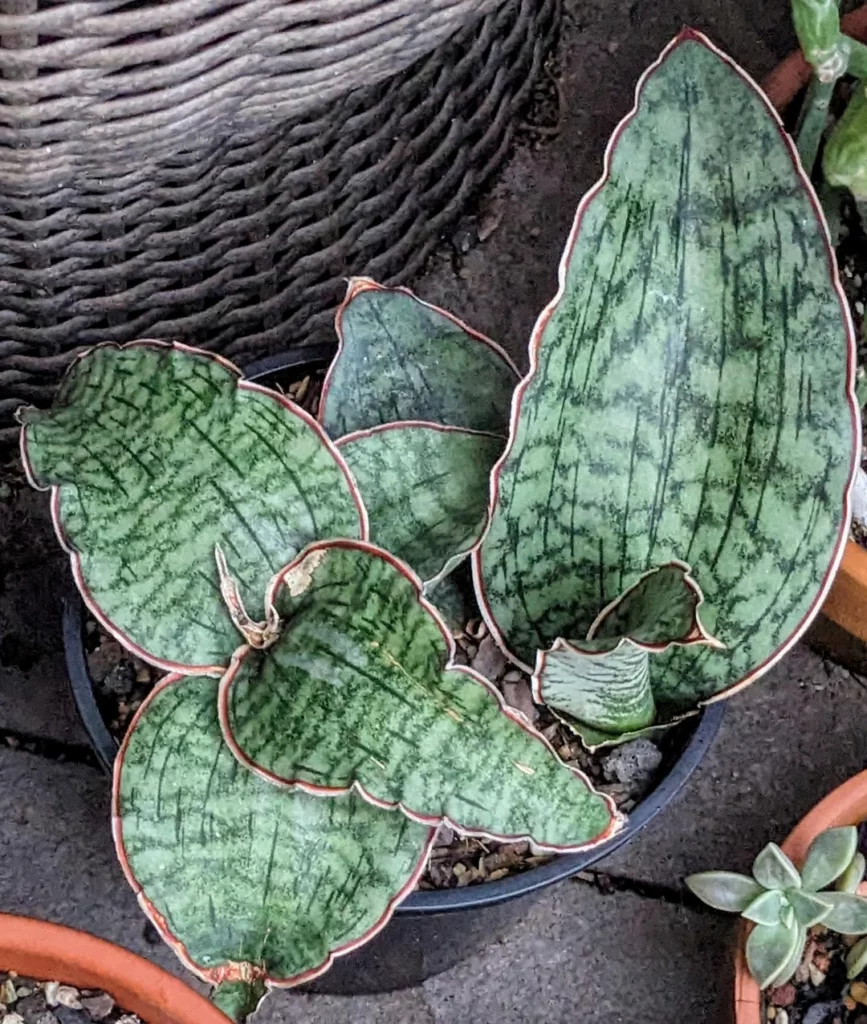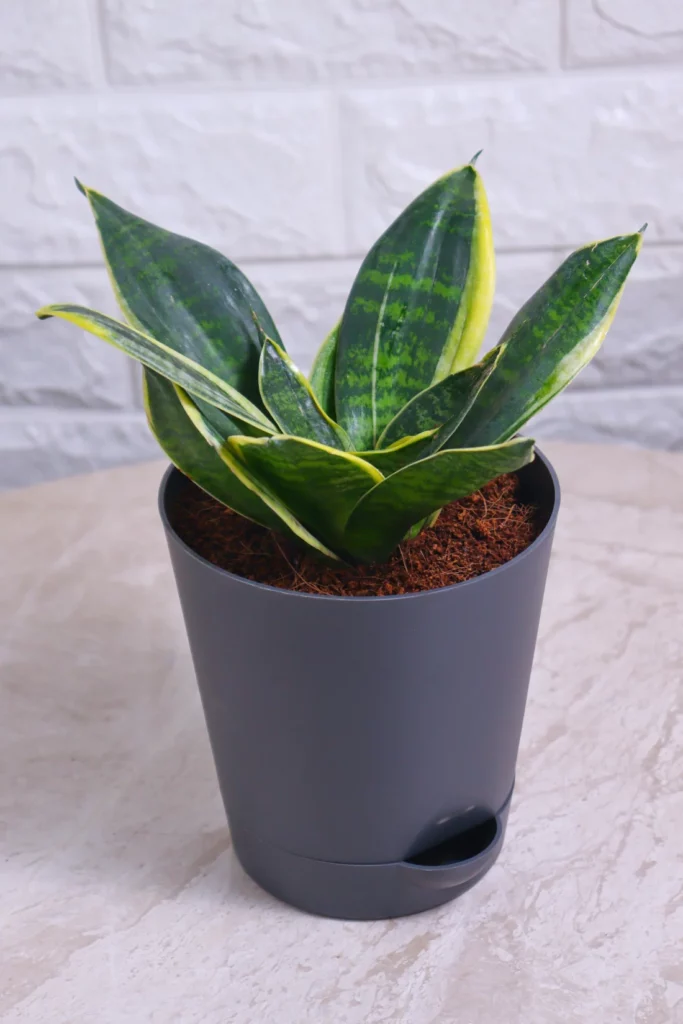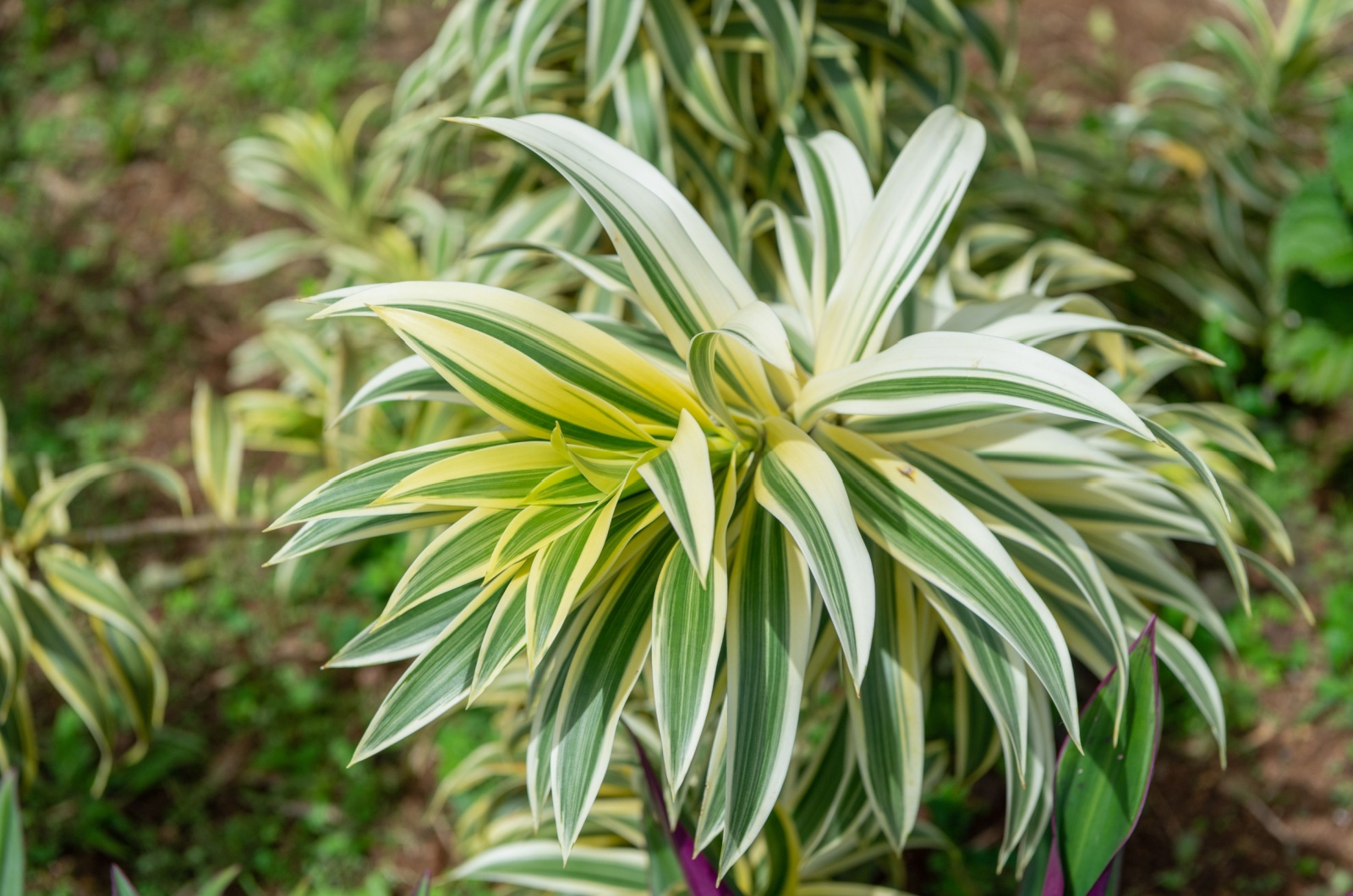I must be honest with you, the main reason I started growing snake plants (a long time ago), is the other nickname the plant has; “Mother-in-law’s tongue”.
Just to clarify, I’m not a fan of snakes and I like my mother-in-law, but everyone had the plant in their collection at that time, so I wondered what was so special about it (the name definitely stood out).
It didn’t take me long to understand; it was the easiest-to-maintain plant a grower could imagine!
Since one plant is never enough, I started looking for other varieties. Today I am going to show you 37 breathtaking snake plant varieties, their features, and some tips on how to make them happy and healthy!
Let’s get started!
37 Snake Plant Varieties
There’s one thing I need to mention before I show you some snake plants. You’ll notice that the first term in the scientific name is sometimes Dracaena, and sometimes Sansevieria. The first one is correct.
DNA studies on these plants showed that snake plants have features of Dracaena plants, which is the reason they are no longer a part of the Sansevieria genus. (1)
No matter if you call it Dracaena or Sansevieria, just say snake plant, and everyone will know!
Here are my top 5 snake plant varieties:
• Dracaena trifasciata
• Dracaena ballyi
• Dracaena masoniana
• Dracaena burmanica
• Dracaena gracilis
Let’s take a closer look!
1. Dracaena Trifasciata
Of course, the first snake plant on our list is the most popular trifasciata plant; the Dracaena trifasciata, aka mother-in-law’s tongue.
The leaves of this Dracaena plant resemble swords, hence the nickname “St. George’s Sword”.
The margins of the St. George’s sword leaves come in yellow, whereas the middle part features a deep green hue. The leaves of this Dracaena point upwards, and the plant doesn’t exceed 3 feet tall.
The growth rate of snake plants is typically slow, but if you ensure the correct growing conditions, you can accelerate it a little bit.
2. Dracaena Trifasciata ‘Black Gold’
As soon as you look at the name ‘Black gold’ you may assume that this cultivar is something special. Well, it truly is!
The leaves aren’t really black; the green hue in the middle of the leaves is very dark and the margins are light gold, hence the common name “Black gold”.
The Black gold trifasciata reaches 3 feet tall under optimal conditions.
3. Dracaena Trifasciata ‘Black Jack’
Here comes one more black variety that’s not truly black. Meet Black jack, the not-so-old Dracaena specimen. Similarly to Black gold, the Black jack variety has deep green foliage, but the margins are light yellow and green combined.
This is a more compact Sansevieria cultivar that won’t exceed 15 inches when cultivated as a houseplant.
If you were looking for a plant for your basement, look no further than the Black jack snake plant!
4. Dracaena Trifasciata ‘Black Robusta’
Another ‘black’ Sansevieria cultivar is the Black robusta Dracaena. Instead of a gold (yellow) hue on the leaves, this cultivar has silver striations, making it truly unique.
The leaves of the Black robusta are broad at the base and have pointy tips. This Dracaena specimen typically reaches 16 feet tall, making it perfect for smaller spaces.
I have to warn you that the Black robusta is sensitive to overwatering, just like its cousins.
5. Dracaena Trifasciata ‘Golden Flame’
Now we have a specimen that has leaves featuring three hues: silver, green, and yellow. Juvenile leaves are grayish green, but as the Golden flame matures, they’ll get darker and darker.
The yellowish, almost gold striations look like flames, hence the name. Similarly to the standard mother-in-law’s tongue plant, the Golden flame has an upright growth habit.
You can quickly propagate this snake plant and expand your plant collection for free!
6. Dracaena Trfiasciata ‘Futura Superba’
The Futura superba Dracaena doesn’t resemble the standard snake plant variety. It doesn’t have an upright growth habit, the leaves are shorter, come in matte deep green, and have fascinating silverish striations.
This cultivar typically reaches 24 inches and requires irrigation whenever the soil feels dry.
Here’s a video on how to get more of these amazing plants:
https://www.youtube.com/watch?v=7OhyPyoNbHs
7. Dracaena Trifasciata ‘Bantel’s Sensation’
If I had to choose the most elegant Dracaena species, it would definitely be the Bantel’s sensation.
This cultivar looks royal; it even got an award of Golden Merit from the RHS (Royal Horticultural Society). This is pretty much an Oscar in the plant world!
What’s so special about it? The narrow variegated leaves stand proudly upright and have white striations that go from the base to the tip.
I have to warn you that this Dracaena needs more light compared to other trifasciata plants because of the variegations.
Here’s a video with more care tips for Bantel’s sensation plant:
https://www.youtube.com/watch?v=7OhyPyoNbHs
8. Dracaena Trifasciata ‘Twisted Sister’
Yes, the name is pretty weird, but it stands for a reason. The variegated leaves of the Twisted sister Dracaena are curvy and very uncommon. The Twisted sister is a compact variety and won’t exceed 15 inches tall.
What about the colors? The thick margins come in light gold and the middle part of the leaf is deep green, much like the colors on most common trifasciata plants.
9.Dracaena Trifasciata ‘Moonshine’
The Moonshine Dracaena isn’t very popular and many growers think it isn’t a snake plant when they first see it.
So, the Moonshine is a succulent, but the leaves are very thin and broad. They come in bright silverish-green and may look almost white when juvenile.
This is one of the main reasons the Moonshine cultivar needs a lot of bright light. Be careful not to put it where it can receive direct sunlight or where there’s no bright light at all. The leaves of the Moonshine may quickly turn green if the plant lacks light.
10. Dracaena Trifasciata ‘Whitney’
Whitney is a cute little Dracaena known for its variegated wide edges. It typically reaches 16 inches and produces approximately 5 leaves that develop in a rosette shape.
If you are a forgetful person, the Whitney trifasciata plant is all you need. The biggest mistake when it comes to this plant is too frequent irrigation; remember that this is the leading cause of stunted growth of Dracaena plants.
Here’s a video on repotting and caring for the Whitney cultivar:
https://www.youtube.com/watch?v=FPVqTRGQUY0
11. Dracaena Trifasciata ‘Laurentii’
Now I want to tell you more about the most famous trifascata cultivar, the stunning laurentii!
You’ll often find this specimen under the name “Variegated snake plant,” and what makes it stand out is the zig-zag pattern on the foliage.
The stripes are horizontal and the leaves come in deep green with yellow and green edges.
Compared to its cousins, the laurentii cultivar is pretty large and will reach 4 feet in optimal growing conditions.
12. Dracaena Trifasciata ‘Laurentii Black Limon’
As you can see from the name, we have another cultivar of the famous species in the collection. I know what you might be thinking, how many species and cultivars are there?!
Well, the laurentii plant is really special, and why would we miss the chance to develop similar plants that are equally beautiful?
The dark green foliage of the Black limon is adorned with lovely, light green variegations.
One of the best features of the snake plant is temperature resistance; the Black limon will survive and grow in various conditions.
13. Dracaena Trifasciata ‘Metallica’
Here’s one more trifasciata cultivar – Metallica. It doesn’t have anything to do with the famous band!
I have to mention that this is a very rare trifasciata cultivar. It reaches approximately 3 feet tall and the foliage is green and metallic silver; the vertical stripes are silver, whereas the horizontal ones are light green.
14. Dracaena Trifasciata ‘Hahnii’
Here comes the cutest, and probably the most popular, dwarf snake plant variety, Hahnii, aka Bird’s nest.
My Hahnii is a foot tall and I don’t think it will grow any more. The most important thing is that my green buddy is healthy and the deep green leaves with vertical stripes make me happy day after day!
15. Dracaena Trifasciata ‘Hahnii Jade Pagoda’
Just when you think it can’t get any better than the standard cultivars, the magnificent Jade pagoda comes along! It’s developed from the lovely Hahnii snake plant.
This Sansevieria is perfect for smaller places since its mature size is only 10 inches tall. But don’t let the size fool you; the Jade pagoda features lovely deep green foliage with yellow curvy edges.
Caring for Dracaena plants is fun and easy, and the Jade pagoda proves it.
16. Dracaena Trifasciata ‘Silver Queen’
Here’s another royal variety; the Silver queen Dracaena. This cultivar reaches 3 feet tall when grown indoors, and the silver colors on the green foliage will make an attractive addition to any room.
The foliage of this royal beauty also has beautiful bright green horizontal stripes.
17. Dracaena Pearsonii
Well, you’ve seen a lot of trifasciata cultivars, so now it’s time to see some other Dracaenas.
I often refer to the pearsonii species as grass-like succulents because the leaves develop into a clump and grow upright. You’ll often find this Sansevieria under the name “Rhino grass”.
I have to mention that this is another rare Dracaena and you won’t see it in plant stores.
18. Dracaena Hanningtonii
We already know that the Mother-in-law’s tongue plant is known for its sword-shaped leaves, but the leaves of the Hannigngtonii species resemble swords even more.
This is the main reason the plant is commonly referred to as the Sword sansevieria.
Another nickname for this snake plant is the Blue sansevieria; the juvenile leaves have a bluish tone and become greener as the plant matures.
This is a pretty large Sansevieria and can reach 5 feet tall when cultivated indoors.
19. Dracaena Patens
Snake plants look polished because of their upright growth habit, but there’s one messy variety – the Dracaena patens.
The leaves don’t grow in a specific direction; I often use the word “chaotic” for this growth habit.
The juvenile leaves of the patens species come in light green but get a bluish tone as they mature. The horizontal, light green stripes become visible in the mature growth stages.
20. Dracaena Pethera
If you’ve been looking for an uncommon snake plant (that most likely no one else has), I have a perfect suggestion for you.
Meet the Dracaena pethera, a plant with deep green foliage and curvy, coppery edges.
This variety also has an unusual growth pattern; instead of growing upwards, the leaves extend over the edges of the pot and point downwards.
You can trim your Dracaena plant to control the growth and get a more compact shape.
21. Dracaena Zeylanica
It’s really hard to differentiate between the zeylanica and the standard trifasciata species. The leaves of the zeylanica Dracaena also grow upright and won’t reach more than 3 feet.
But there’s one thing that differentiates these two species – the foliage color. The zeylanica has an almost olive hue on the leaves, and bright green horizontal stripes that develop into a zig-zag pattern.
22. Dracaena Parva
The best way to describe the parva species from the genus Dracaena is with the word “fountain-like”. The leaves don’t grow upright, but neither do they cascade over the pot edges.
The horizontal stripes come in bright green and adorn the lance-shaped foliage.
You can expect this Sansevieria species to grow up to 1.5 feet tall.
23. Dracaena Ballyi
The ballyi species only reaches 6 inches tall, so you can put it anywhere in your apartment.
If you ask for a dwarf snake plant in a nursery, you’ll most likely get the ballyi species.
The leaves come in green and have bright green stripes and coppery leaf tips.
24. Dracaena Canaliculata
If you are a plant hunter, here’s another rare snake plant you’ll like. The foliage of the canaliculata follows the pattern ‘each leaf for itself’, meaning there will be no rosettes.
The leaves come in solid green and have recognizable white tips.
You can expect the canaliculata species to reach 3 feet.
25. Dracaena Fernwood
Here comes the first hybrid on my list, the Dracaena fernwood. It’s developed from two species – parva and suffruticosa.
This Dracaena also reaches 3 feet tall and has lovely dark green foliage with bright green horizontal stripes.
The roots of snake plants are very sensitive, so make sure not to overwater your fernwood plant.
26. Dracaena Masoniana
The masoniana species is definitely my favorite. The plant also goes under the name “Whale fin snake plant.” It actually tells us more about the leaf shape.
The leaves are very wide and come in bright green with lighter green splotches, while the edges of the leaves come in maroon.
This is another rare Dracaena plant, so don’t miss the chance if you come across one.
27. Dracaena Concinna
The concinna species typically reaches 1.5 feet and the lovely oval-shaped leaves develop into the shape of a spoon.
When choosing a pot for your snake plant, make sure it has drainage holes in the bottom.
28. Dracaena Aubrytiana
We don’t just have the Mother-in-law’s tongue in the plant world! Meet the Father-in-law’s tongue, aka Dracaena aubrytiana!
The shiny leaves of this snake plant are adorned with lovely white splotches that give a marbling effect.
Similarly to other snake plants, the aubrytiana has flat, sword-shaped leaves.
29. Dracaena Stuckyi
If you have a large apartment, I have the perfect snake plant for you! The stuckyi species reaches 6 feet tall, making it one of the tallest snake plants.
The mature stuckyi species features elongated, thin, pale green leaves with pointy tips. The young plants, on the other hand, have green leaves with deep green stripes.
The fact that the plant looks different in the juvenile and mature growth stages makes it perfect for every plant lover.
30. Dracaena Suffruticosa
The suffruticosa species features dark green foliage with bright green stripes and white tips.
You should be careful with the leaf tips as they’re really sharp. Make sure to give it enough light; yes, the plant tolerates lower light levels, but spots that are too shady will cause your snake plant to become skinny.
31. Dracaena Francisii
One of the loveliest snake plant species is the Dracaena francisii. Its short, tubular leaves have grayish-green bands and the leaf tips are brownish.
This is another hard-to-find variety, so never miss the chance if you see it somewhere.
32. Dracaena Pinguicula
Is it an agave or the Dracaena pinguicula? This is the most common question growers have when they see either of these two plants.
The pinguicula species typically reaches 1 foot in height. It has interesting bluish-green leaves with maroon edges and tips.
33. Dracaena Angolensi
One of the most fascinating things in the plant world is the braiding of plants. I’m sure you’ve seen the braided snake plant on Instagram or Facebook.
The Dracaena angolensi was known as the Sansevieria cylindrica, and the latter is still widely used.
This variety typically reaches 6 feet tall, which is why we can braid it. The plant has a central crown and all the leaves arch outwards from it. The leaves are grayish-green and the stripes aren’t noticeable compared to other common species.
34. Dracaena Angolensi ‘Starfish’
The term starfish in the name of the Dracaena angolensi cultivar fits perfectly. The deep green fleshy leaves have horizontal grayish stripes, and when the plant matures, the leaves form into the shape of starfish.
You can expect your cute angolensi cultivar to reach 1 foot tall.
35. Dracaena Ehrenbergii Samurai Dwarf
The last Dracaena on our list is the Ehrenbergii cultivar Samurai dwarf. What’s interesting about this plant is that it reaches 6 inches tall when mature, making it one of the smallest varieties in the Dracaena genus.
What’s so interesting about it? Well, the parent plant, ehrenbergii, reaches 6 feet tall indoors.
The leaves of the Samurai dwarf are very short and have maroon or white margins.
36. Dracaena Trifasciata ‘Silver Blue’
Credit: Reddit
The Silver blue snake plant is a rare and highly sought-after variety, thanks to its striking, silvery-blue foliage. The broad, upright leaves have a smooth texture, and their muted color gives this plant a modern, elegant look.
What makes this cultivar stand out is its ability to shift between silver and blue-green hues, depending on the light exposure. It thrives in bright, indirect light but can tolerate lower light conditions as well.
With a mature height of around 2-3 feet, the Silver blue is perfect for those looking to add a touch of sophistication to their indoor jungle.
37. Dracaena Trifasciata ‘Jade Marginata’
Credit: Instagram
The Jade marginata snake plant is a stunning variety featuring deep green, slightly wavy leaves with subtle golden or lime-green edges. Its unique foliage adds texture and depth to any plant collection.
This cultivar grows in a compact, upright manner, reaching about 1-2 feet in height. It’s an excellent choice for small spaces, tabletops, or as a stylish addition to larger arrangements.
Like other snake plants, it thrives in low to bright indirect light and requires minimal maintenance. Just be mindful of overwatering, as too much moisture can cause root rot.
Wrapping Up
Who would’ve thought there are so many snake plant varieties?! The good news is that the vast majority of the 35 plants I described above are widely available and suitable for indoor cultivation.
These succulent species are easy to maintain and you only need to pay attention to size because some may grow pretty tall and not fit into your apartment.
No matter which Dracena species you choose, I’m sure you’ll love it!
Until next time!
[sp_easyaccordion id=”18655″]

